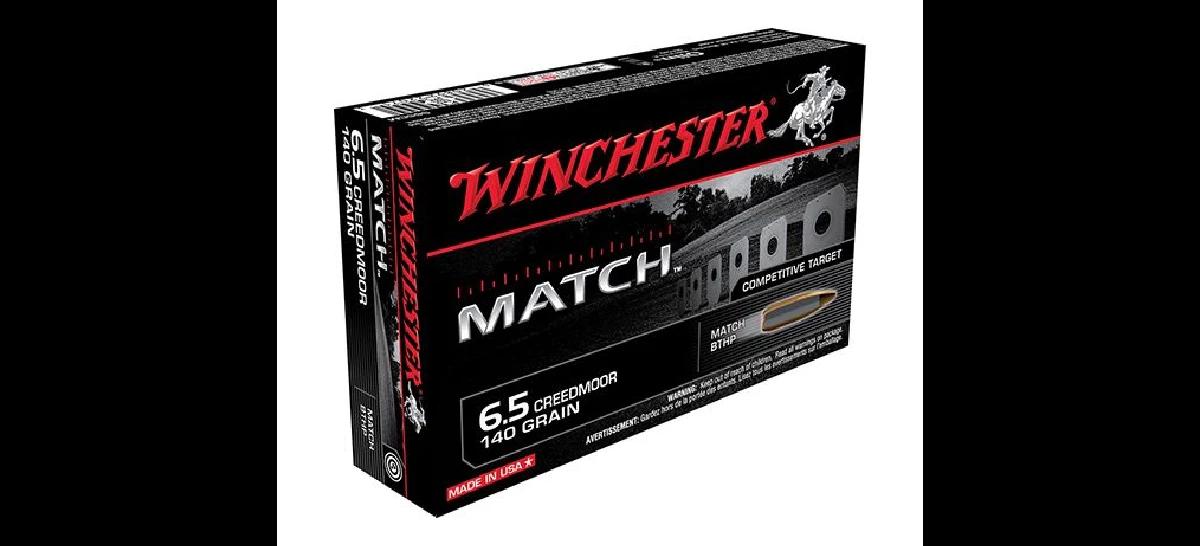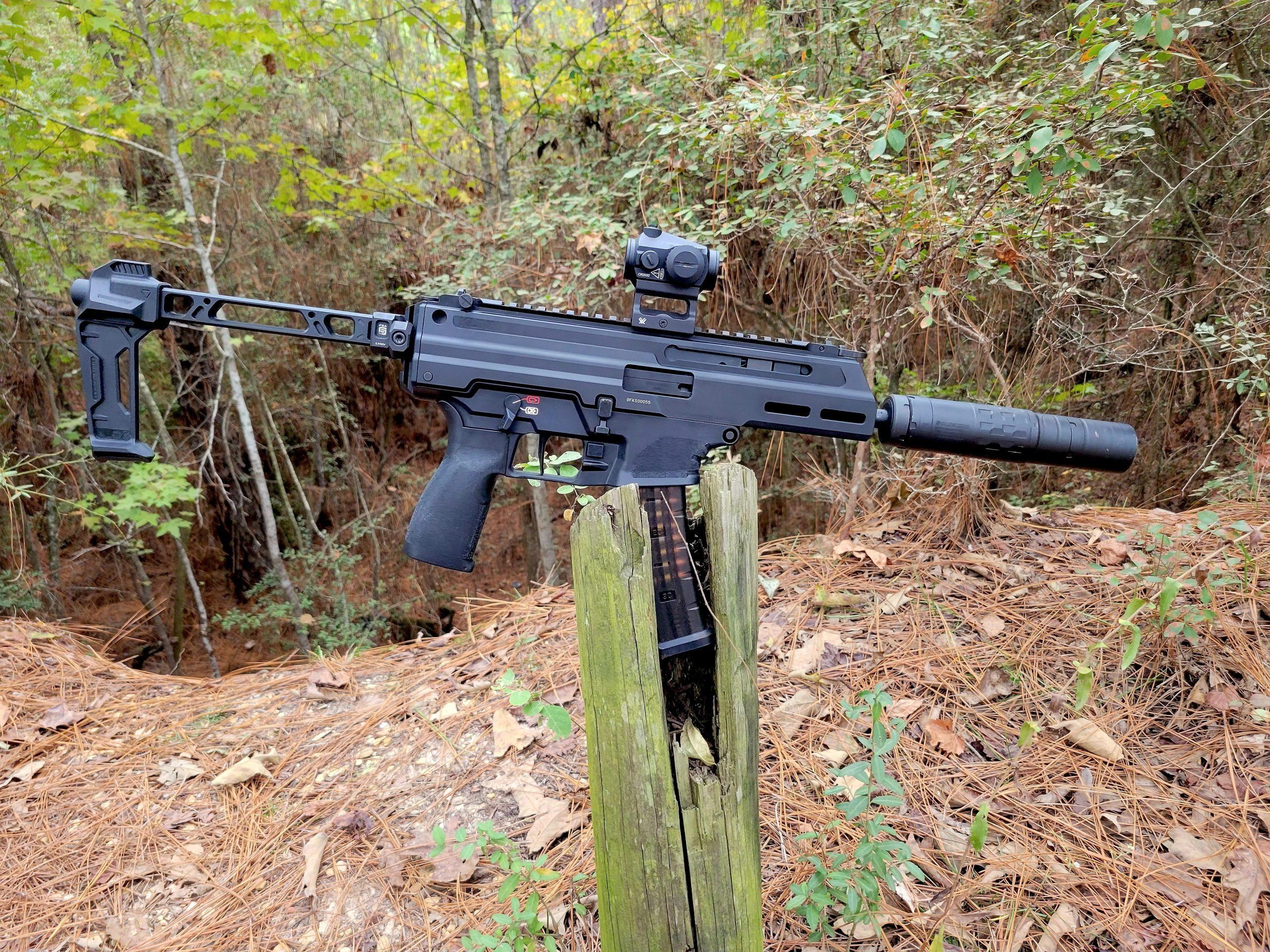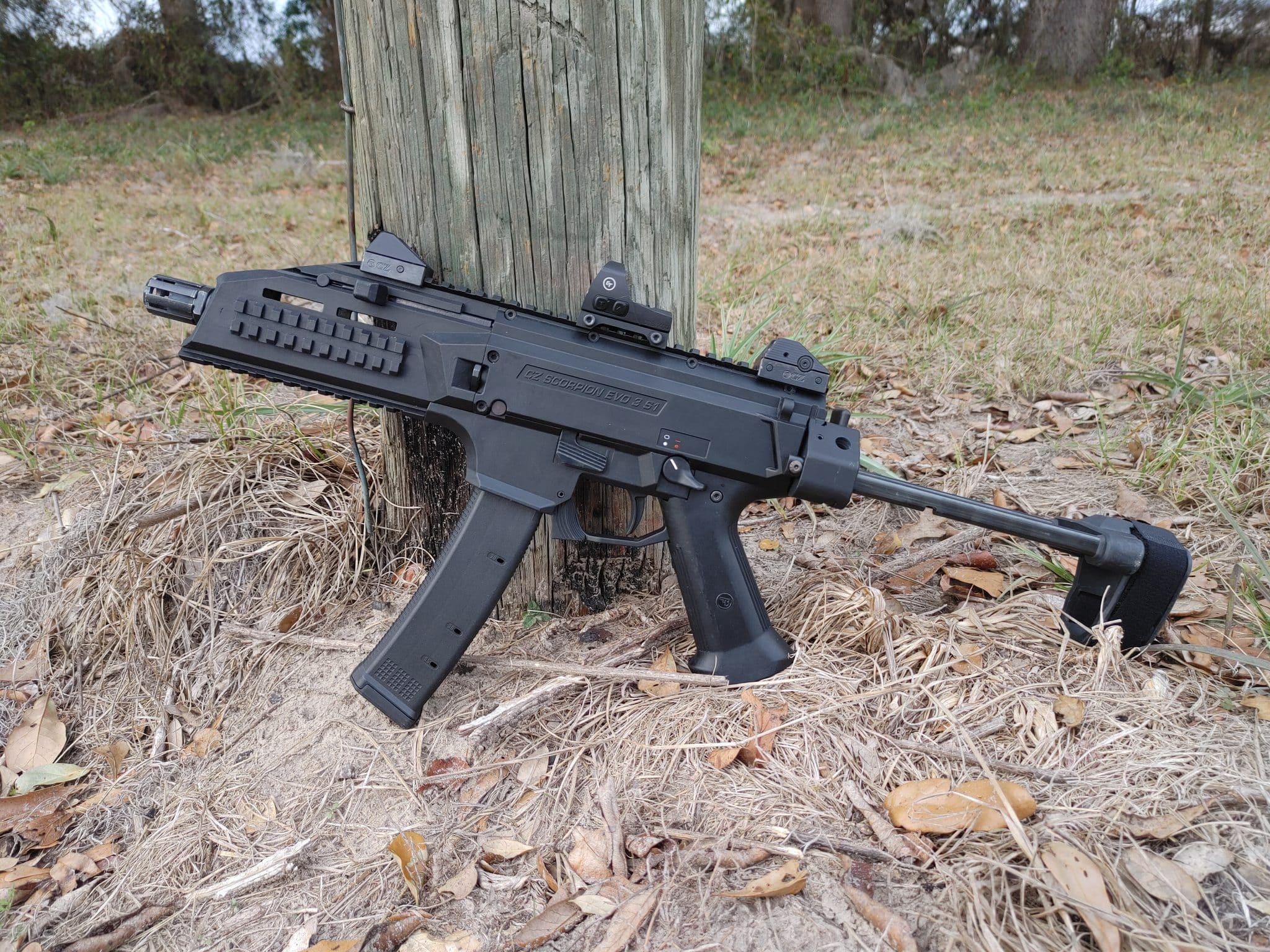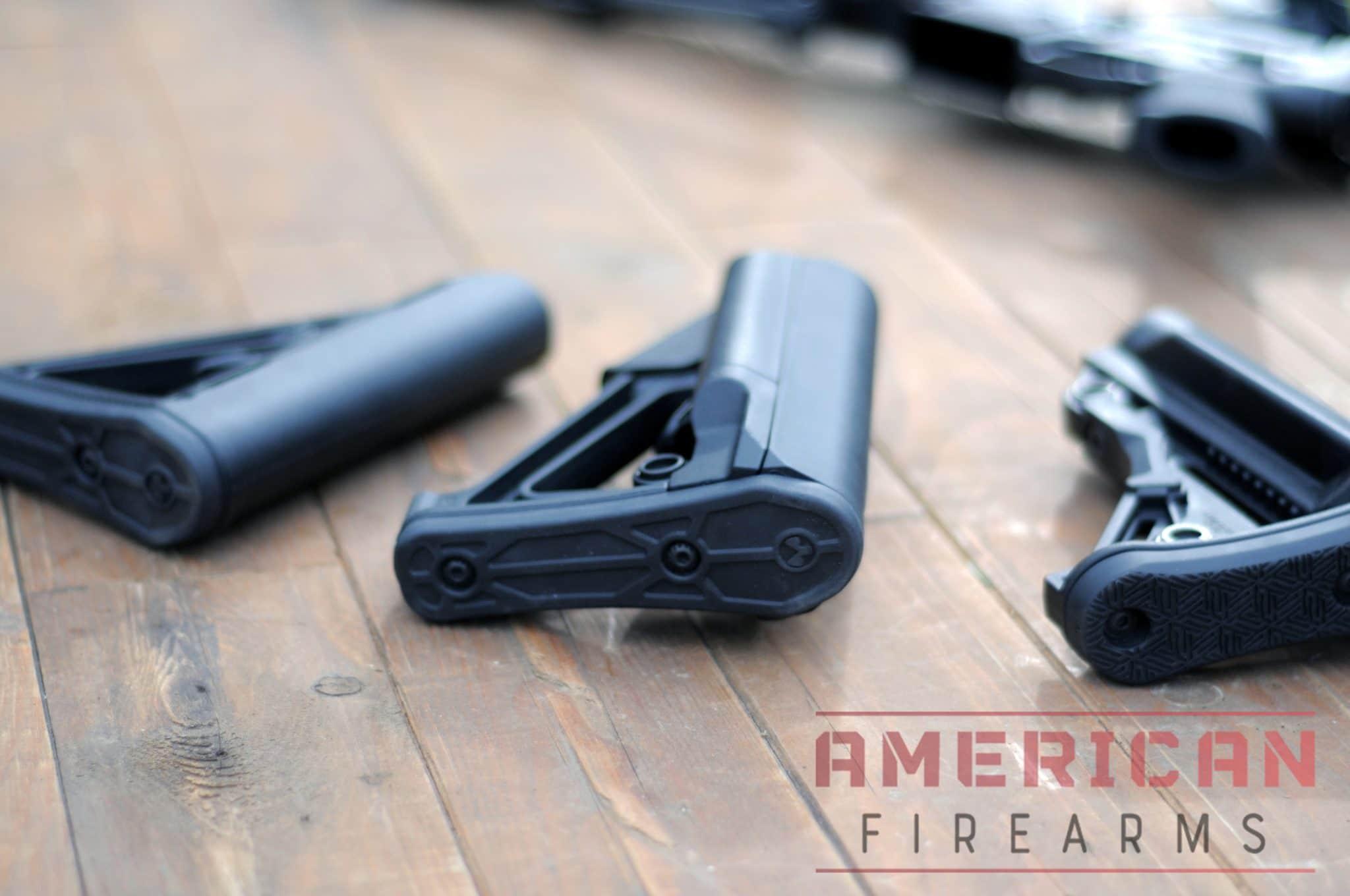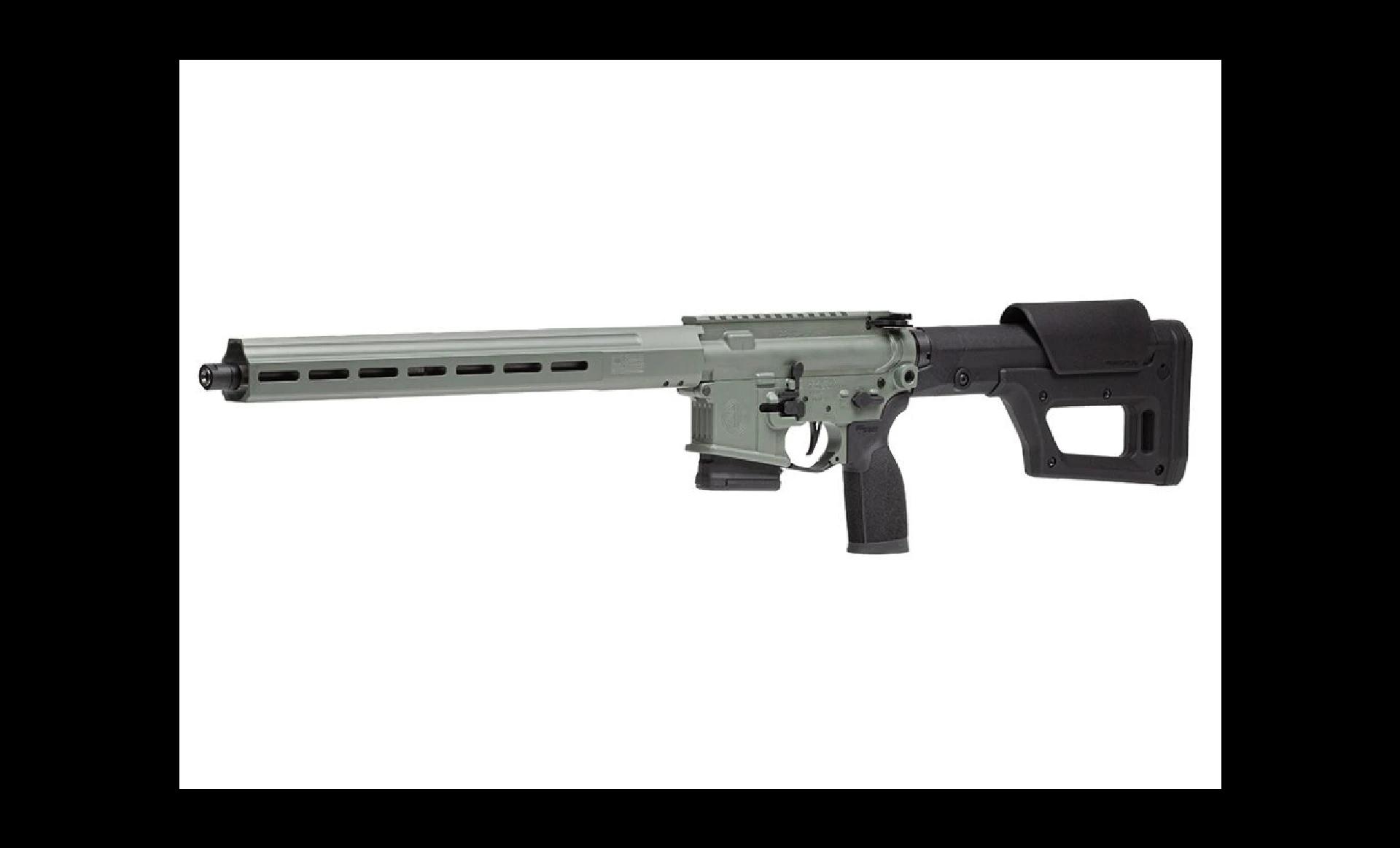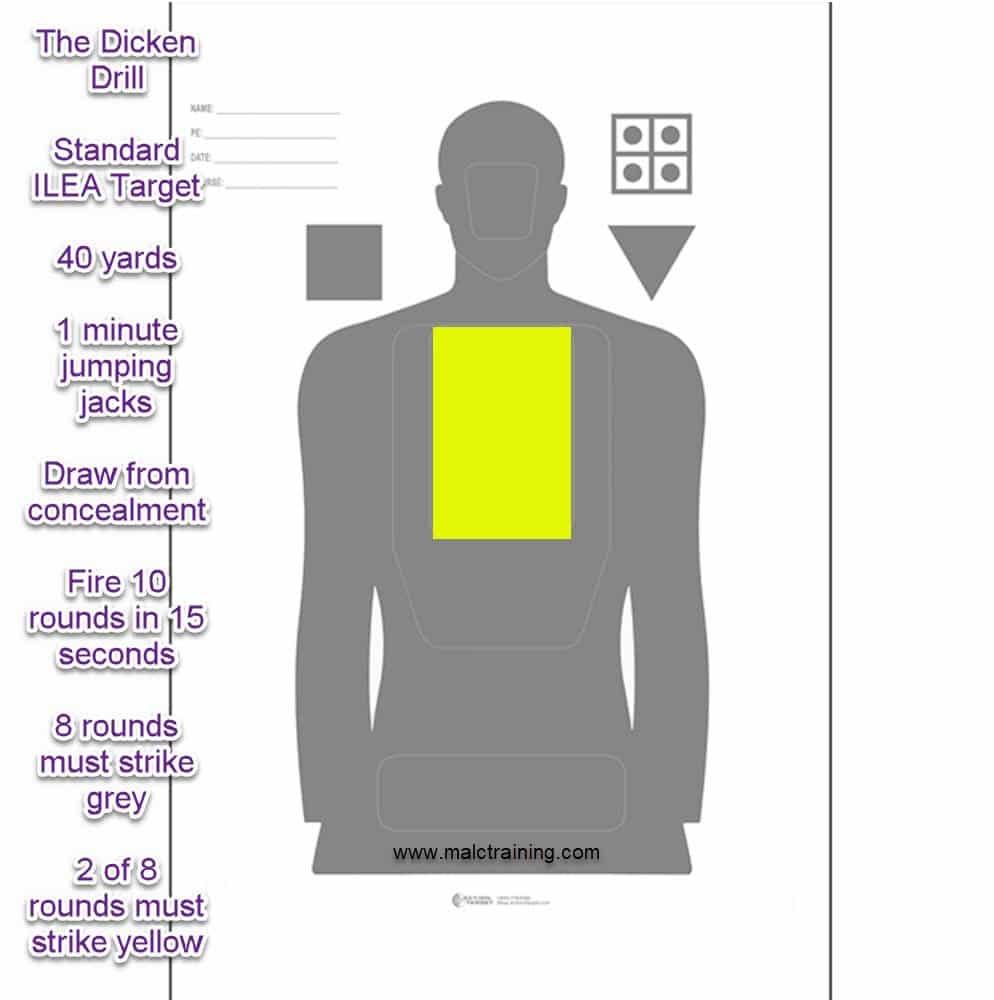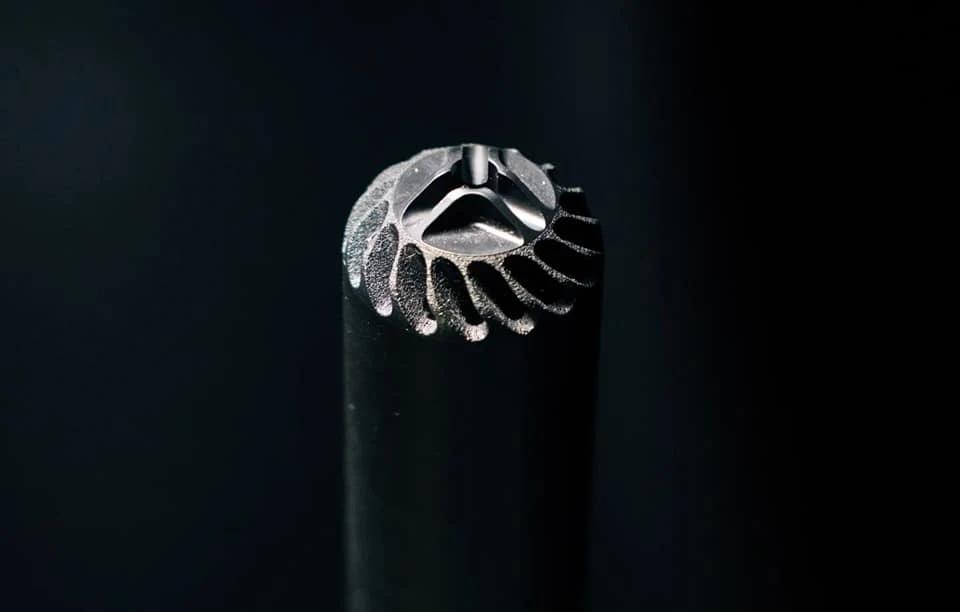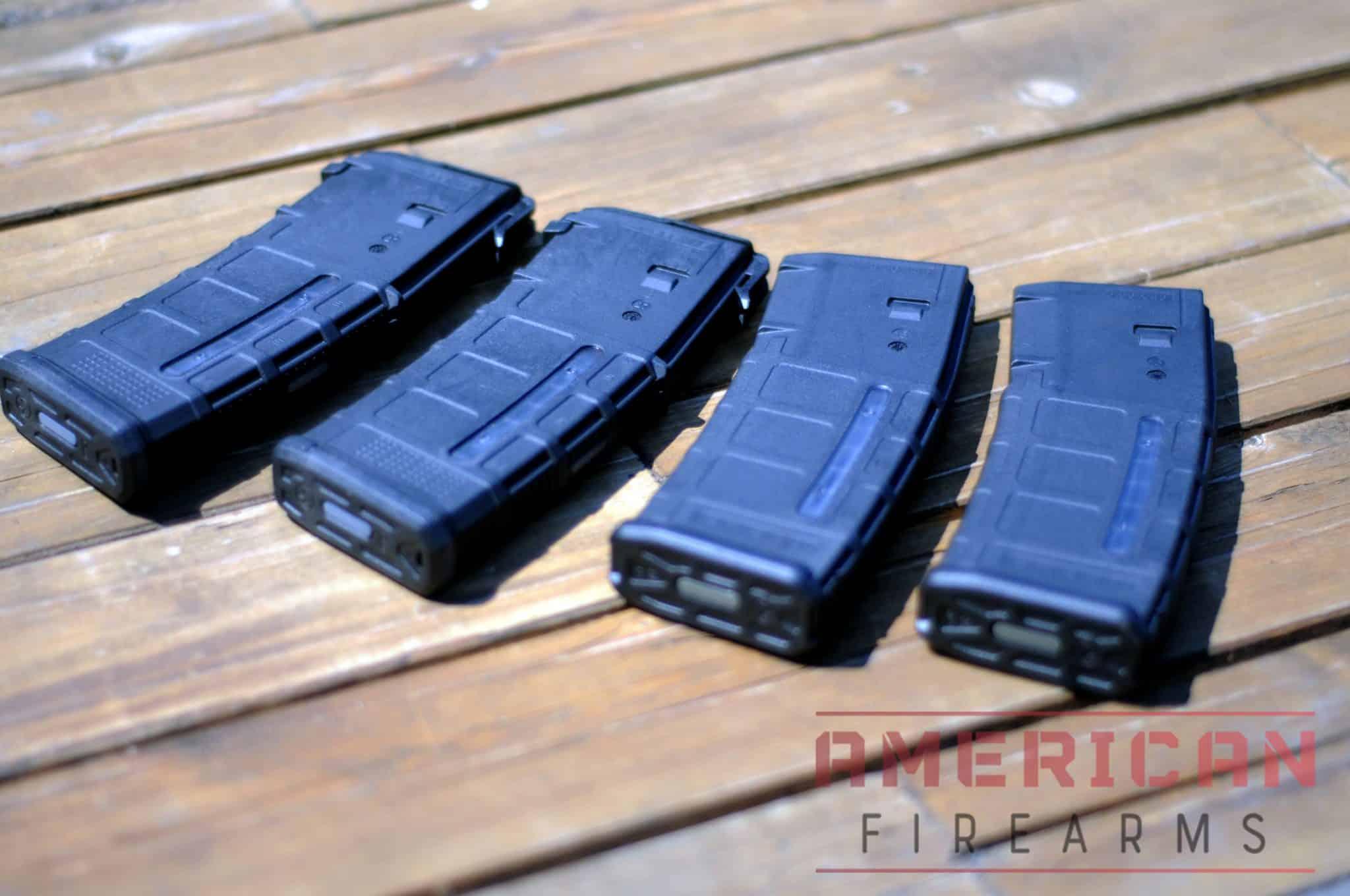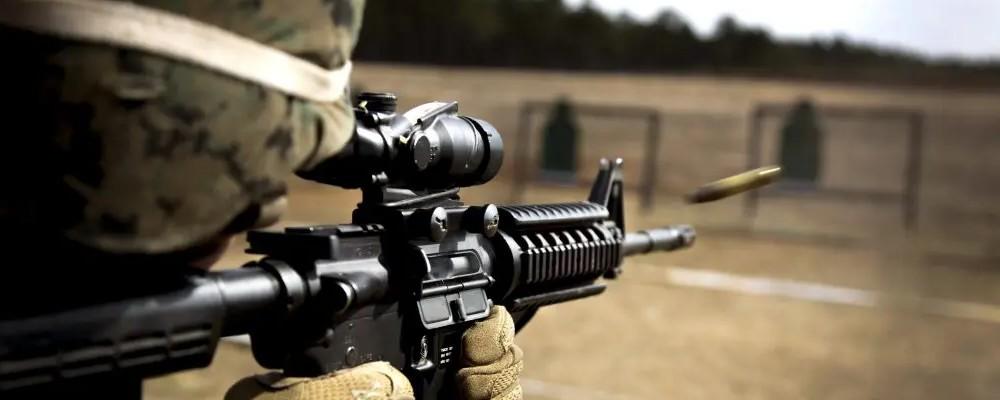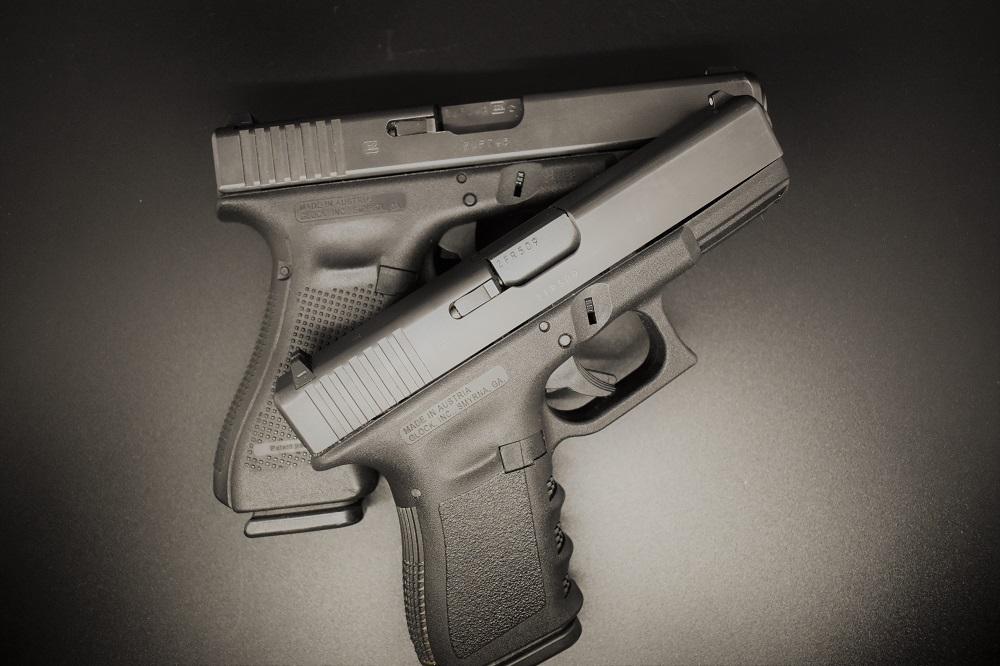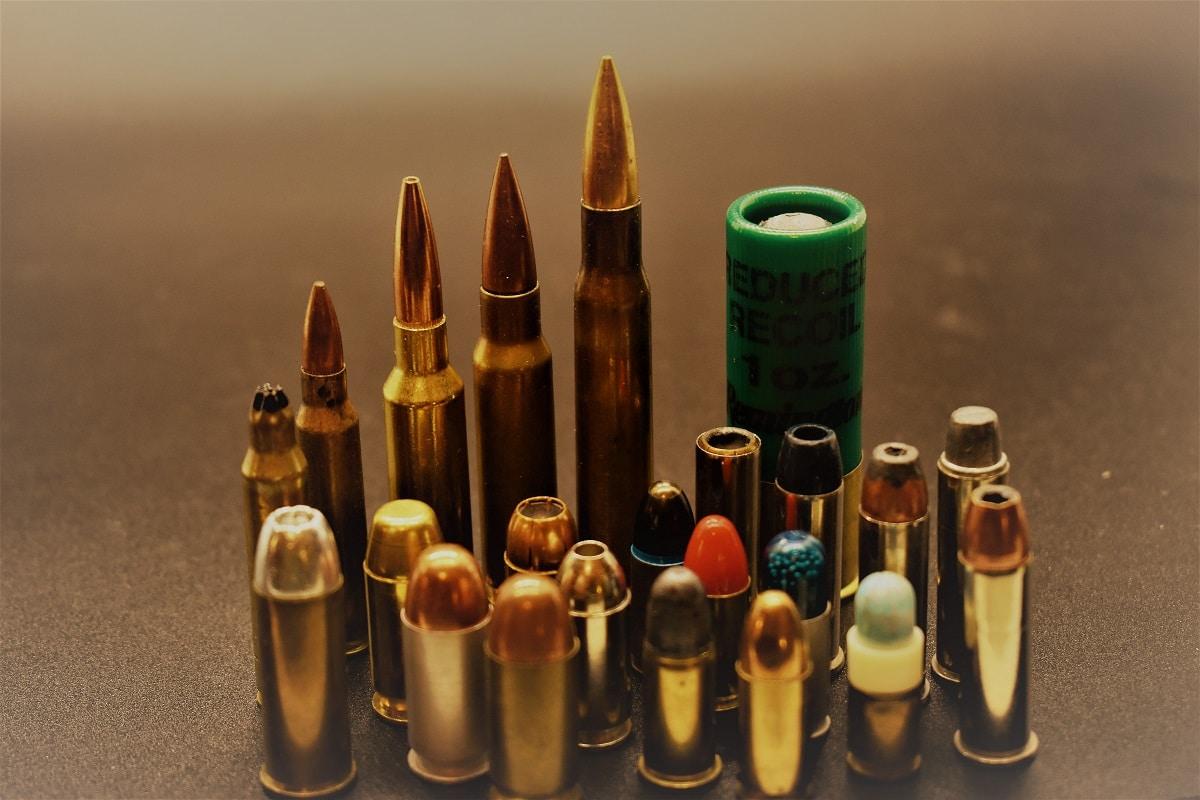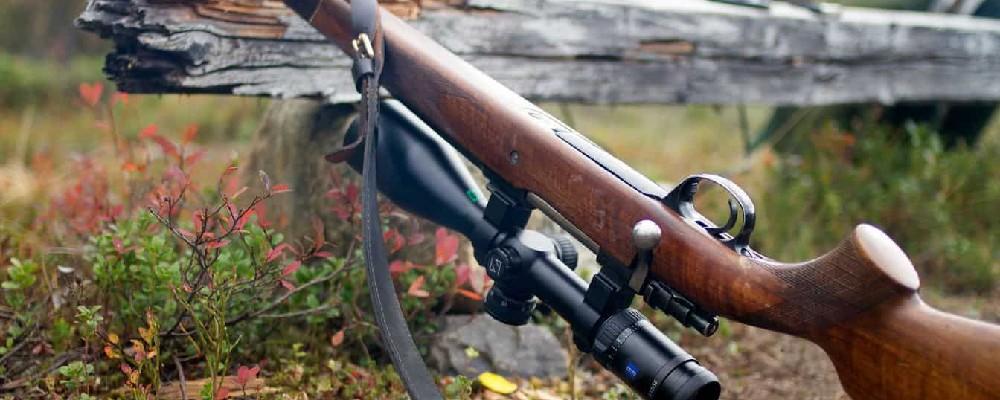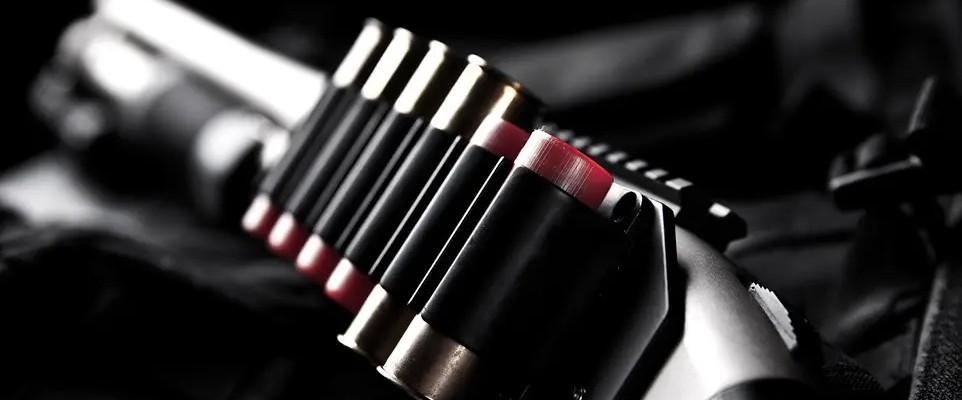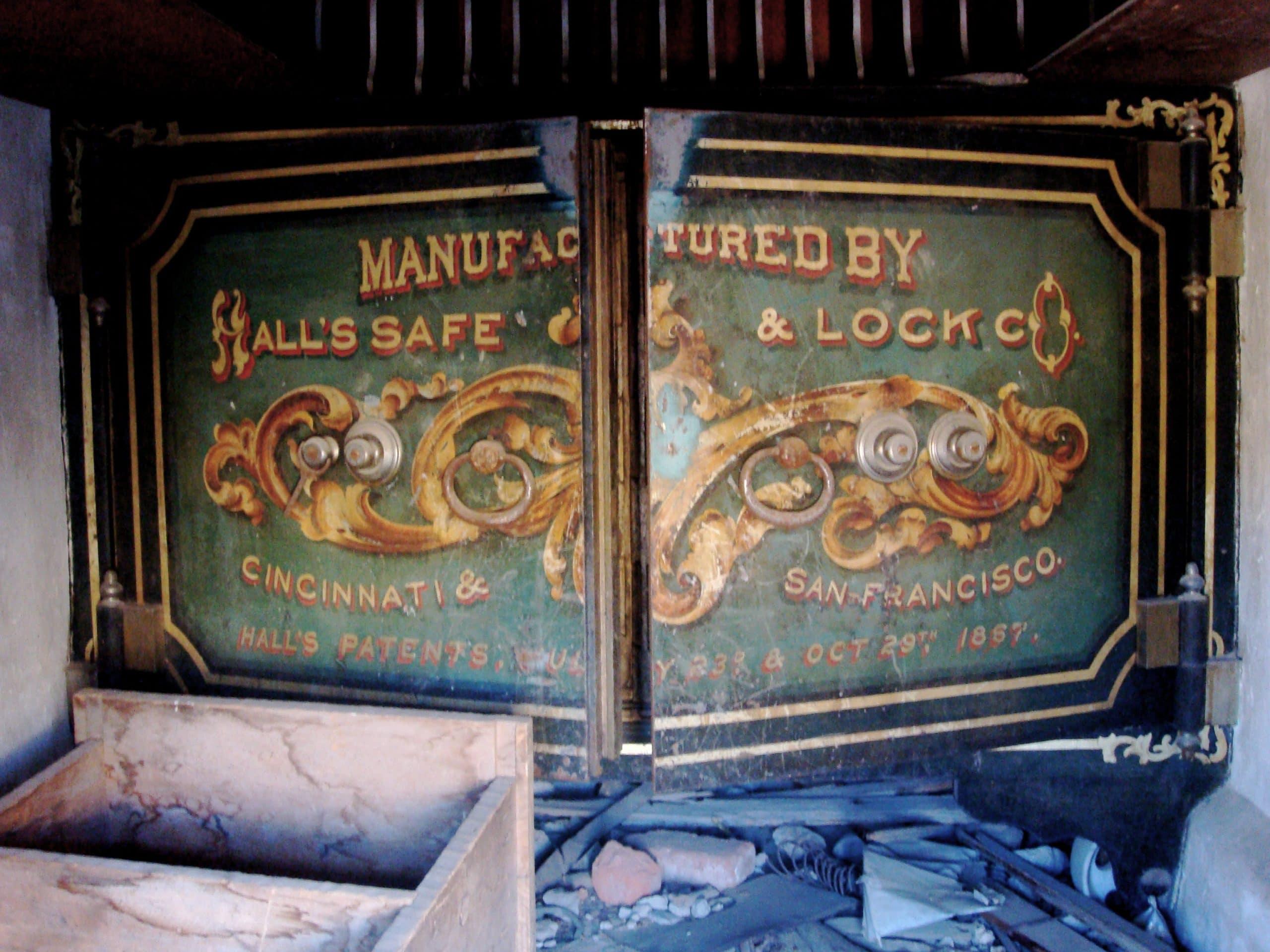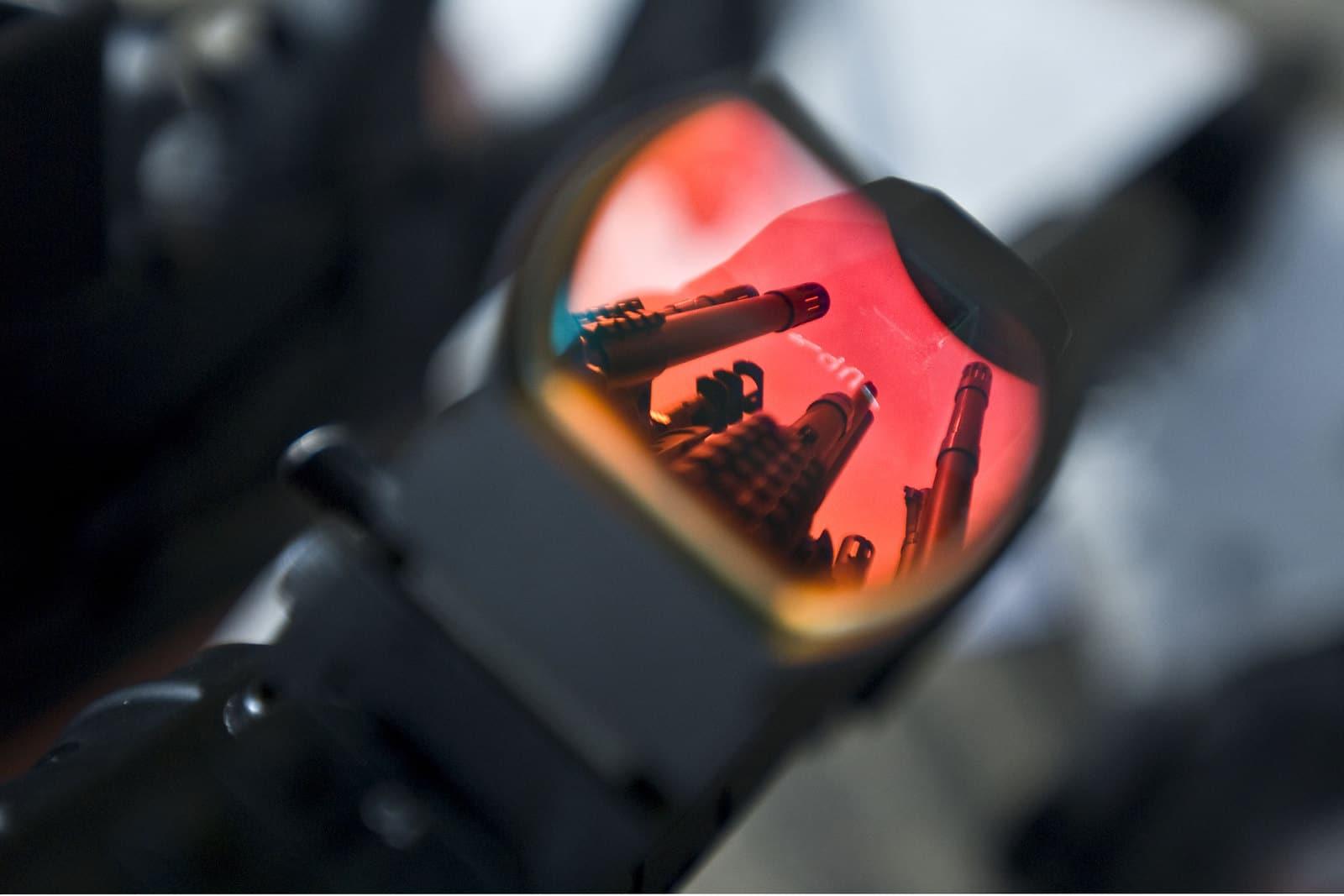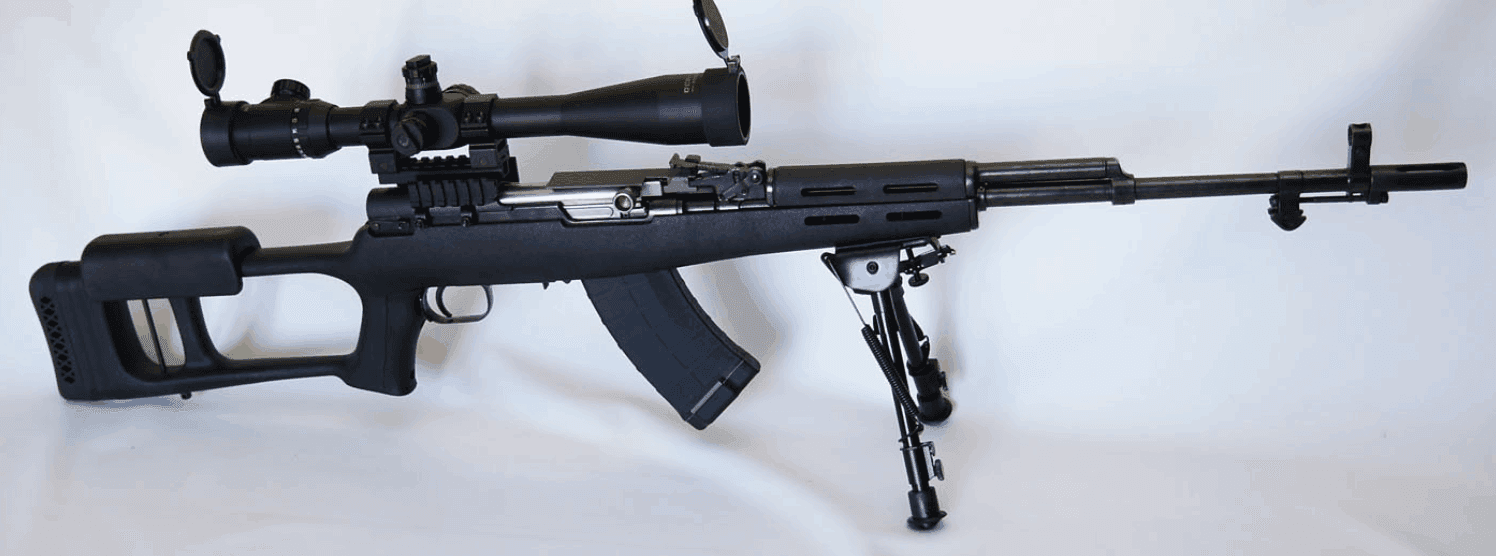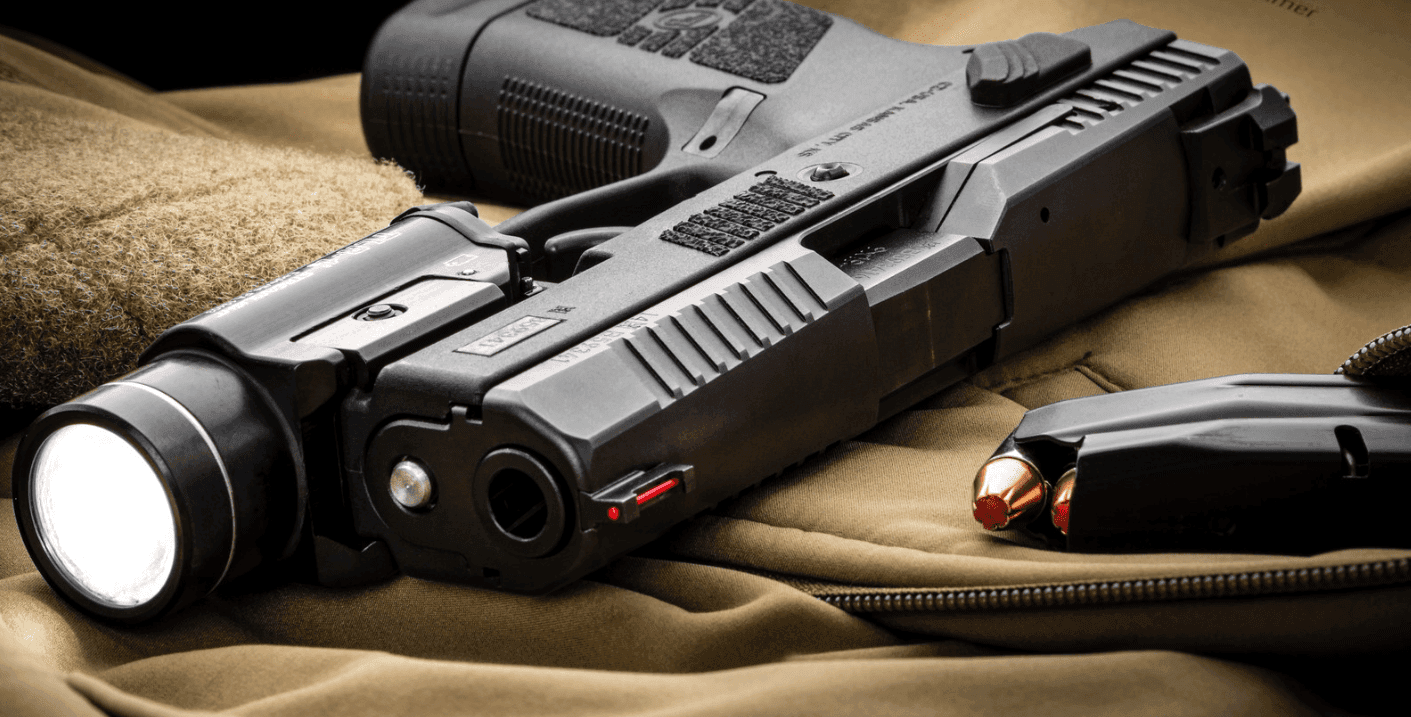Ruger Precision Rifle in 6.5 Creedmoor [Hands-On Review]
Ruger's chassis-based Precision Rifle kicked off the current trend of production-level chassis rifles, but how does it hold up a decade after release? Come find out.
Written By
Megan Kriss
Expert Contributor
Edited By
Michael Crites
Licensed Concealed Carry Holder
Share:
Products are selected by our editors. We may earn a commission on purchases from a link. How we select gear.
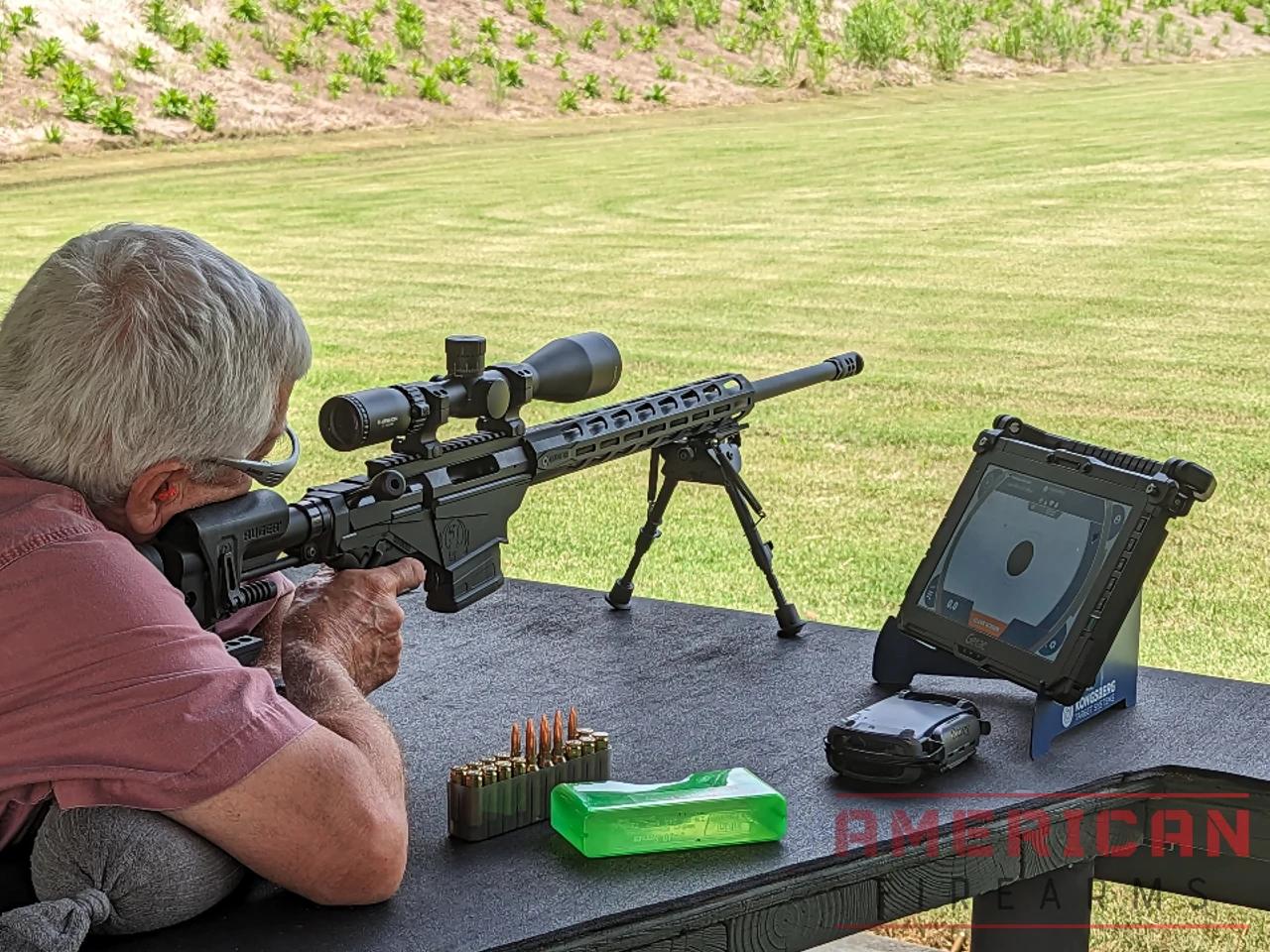
Updated
Sep 2025
The Ruger Precision Rifle kicked off a huge demand for production-level chassis rifles for long-range shooting. These days, just about every bolt-action manufacturer has a chassis-style rifle designed for long-range shooting and events for PRS, at a reasonable price point that is approachable for those new to the sport.
Of course, that was almost a decade ago now, so we wanted to see how the RPR stacks up to the now-crowded field of production precision rifles that you can just buy off the shelf, and then go ring steel at a thousand yards with.
Here’s what I found out, based on some extended time with the gun.
In This Article
Overall Score
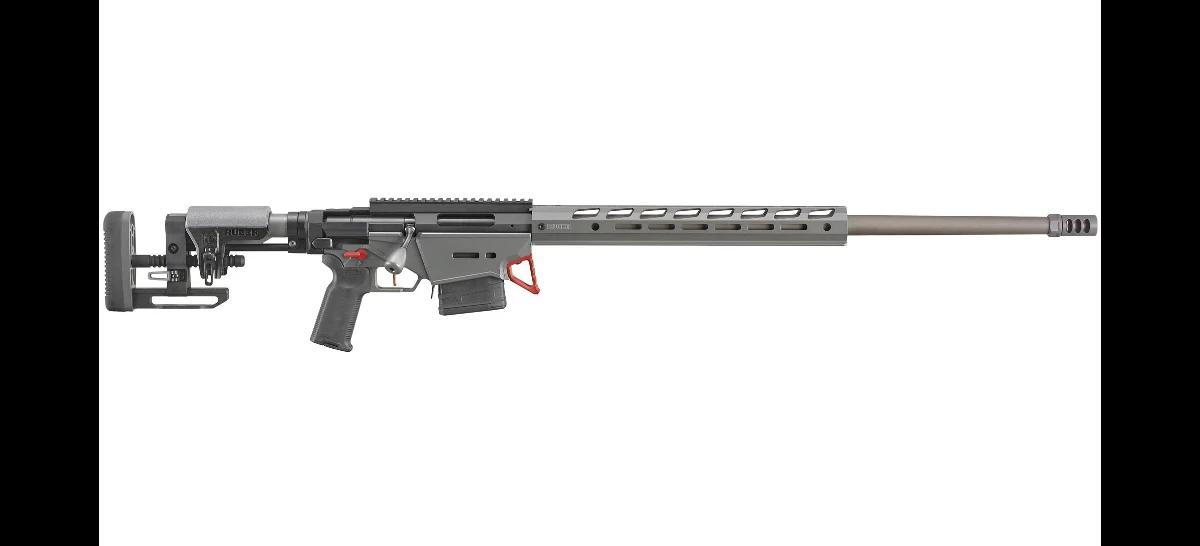
$541.99

56
EXCEPTIONAL
2025 Awards & Rankings
Performance Scores
Best For
- Exceptional accuracy, suitable for Precision Rifle Series competitions
- Modular design makes customization easy
- Comfortable and adjustable stock and grip
- Effective muzzle brake mitigates recoil
- Versatile magazine compatibility
- Really nice trigger with adjustable pull weight
- Solid value
Considerations
- Bolt throw can be fickle
- Finish durability is not on par with higher-end rifles
- Fiddly cheek comb adjustment
Our Verdict
All in all, I continue to be impressed by the Ruger Precision Rifle. Far from showing its age, all this titan has really done is show us why it has become so popular over the past few years.
To say it shoots well for the price is a massive understatement — sub-MOA (and at times sub half MOA at 100 yards) are certainly possible. It’s better than almost anything else on the market at this price point really, and it is customizable to the nth degree while still being perfectly adequate for most shooters right out of the box. Does this put some additional pressure on the Accuracy Internationals and Ritter & Starks of the world? Yes indeed. Is that a good thing? Probably.
If you’re looking to get into the sport of precision shooting, or you just want to be able to rock up to your local 1000-yard range and ring some steel, the Ruger Precision Rifle should definitely be in the top three or so rifles you take a look at, in my opinion.
It performed well in our testing and does what it claims to do. And at that price, it’s hard to find fault with it anywhere.
Test Scores
How does Ruger’s chassis rifle performance stand? Here are the scores:
Accuracy: 10/10
If you don’t get in its way Ruger Precision Rifle hits the bullseye every time, with accuracy that rivals even higher-priced custom rifles.
Ergonomics: 9/10
With its highly modular chassis design and adjustable stock, the Ruger Precision Rifle is about as ergonomic as a rifle gets. Yes, it’s heavy, but still a still pleasure to handle.
Fit and Finish: 8/10
It’s a typical Ruger product, which means it’s finished nicely. The slight issues with touchy bolt operation and finish durability can be nitpicked by discerning shooters.
Features: 10/10
Loaded with factory features and built for customization, it’s a shooter’s playground. From the adjustable trigger to the versatile magazine compatibility, it gives you everything you need to excel at the long game.
Reliability: 10/10
Ruger’s Precision Rifle is a reliable workhorse that goes bang without fail. With over 400 rounds fired, we experienced zero issues.
Value: 9/10
It’s not a cheap rifle but it does exceptional value — especially when you’re talking about PRS-level products.
Specifications
Generation: | Gen3 |
Caliber: | 6.5 Creedmoor |
Finish: | Matte black / Type III black hard-coat anodized |
Action: | Bolt action |
Bolt: | Three-lug single-piece bolt with 70° throw |
Barrel Length: | 24 inch (Ruger Precision Rifle Hybrid Muzzle Brake included) |
Barrel Thread: | 5/8"-24 |
Twist Rate: | 1:8" RH |
Stock: | Folding / Adjustable Length of Pull and Comb Height |
Weight: | 10.7 lbs (empty) |
Capacity: | 10-round detachable box (AICS & Magpul compatible) |
Length of Pull: | 12 to 15.50 inches (adjustable) |
All data from Ruger |
Background on the Ruger Precision Rifle
Around 2015, the folks at Ruger took a good long look at the firearms market and asked themselves a question that they seem to turn to a lot when brainstorming new products. That question was “How do we take that thing (in this case, chassis rifles) and make it cheap enough for regular people to buy it, but still make it worth buying?”
They have a history of doing this, from their 10/22, GP-100 Revolver series, the Ruger Pistol Caliber Carbine, the new Ruger-5.7…Ruger likes making affordable, but still high-quality production versions of things that people really want.
Several years ago, they saw the success of chassis-based precision rifles in sports like the Precision Rifle Series and decided to bring something to market that had a lot of the same features as the $4,500+ custom PRS rifles, but at about a quarter of the price.
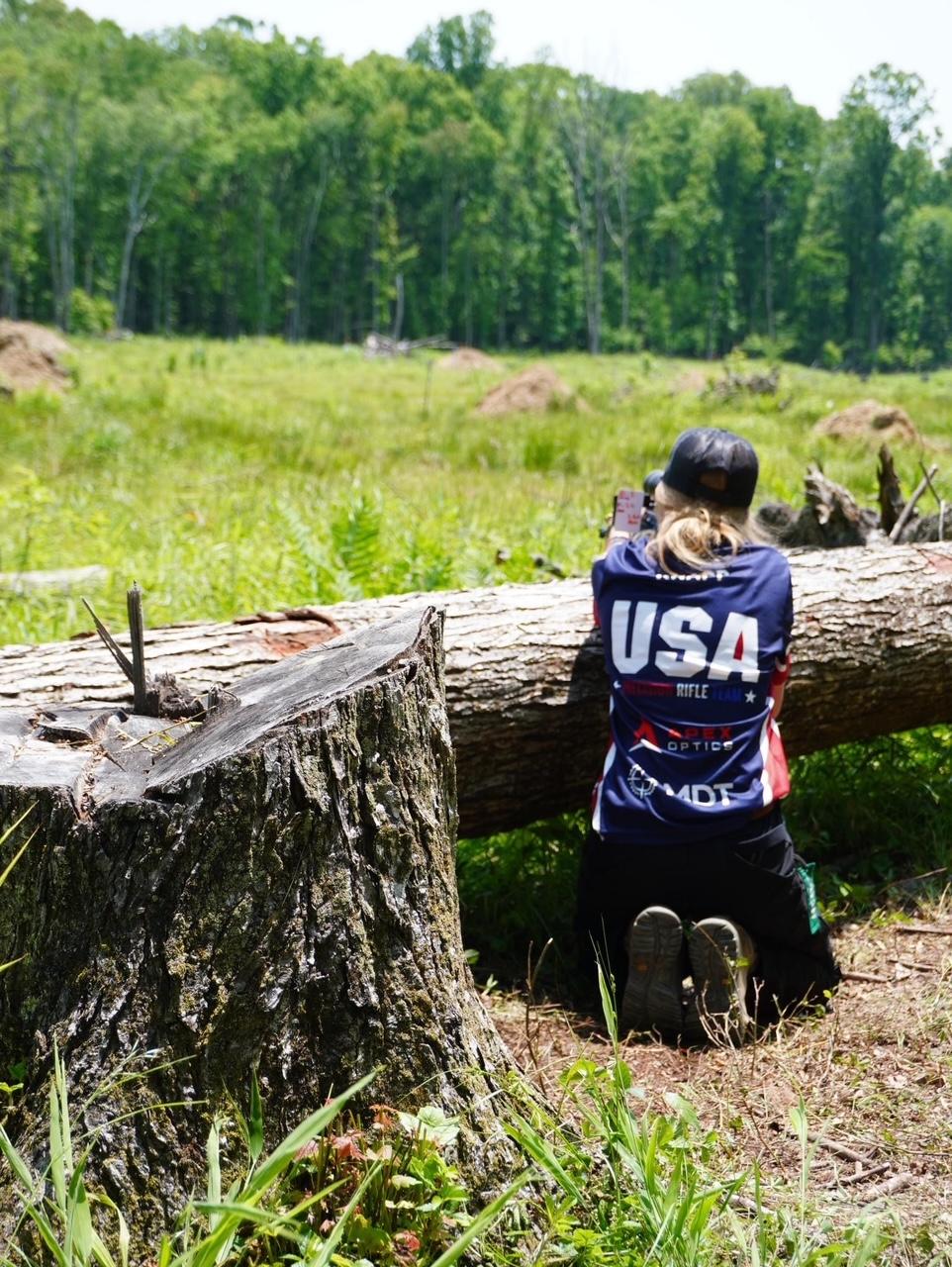
The Ruger Precision Rifle was the result, and few guns have had the impact the RPR has. It has been incredibly successful in making the bolt action precision rifle world more accessible to traditional AR shooters by reducing the cost of entry to something fairly approachable.
In short, the RPR opened the floodgates to the current spate of chassis-based rifles by proving there was a market for them.
Not everyone loves Ruger and other big players stepping on this market — some would argue it takes business away from custom rifle makers, which has a ring of truth to it. I would argue that rifles like the RPR are “gateway rifles” that ultimately bring more into the world of precision shooting and create a fundamentally bigger market.
Evidence of this is in the growth of the Precision Rifle Series, which is more popular than ever. Something tells me guns like the Ruger Precision Rifle have more than a little to do with this.
Is the PRP a victim of its own success?
When I first got my hands on the Ruger Precision Rifle back in 2015, it felt like witnessing a paradigm shift in the precision rifle world. Here was a factory rifle that could deliver custom-level accuracy at a fraction of the cost, complete with features that previously required expensive aftermarket modifications. Fast-forward to today, and the landscape has changed dramatically. The question isn’t whether the RPR is still a good rifle—it absolutely is—but whether it maintains the same compelling value proposition that made it revolutionary nearly a decade ago.
The harsh reality is that Ruger’s groundbreaking success created its own competition. When the RPR launched with an MSRP of $1,399 and street prices around $1,100-1,200, it was virtually alone in the affordable precision rifle space. Today, that same rifle carries an MSRP closer to $1,929 for the 6.5 Creedmoor model, with street prices rarely dipping below $1,550. While inflation accounts for some of this increase—that original $1,200 would be worth about $1,547 in today’s dollars—the competitive landscape has exploded with alternatives.
The New Competition
Walk into any gun store today and you’ll find precision rifles that didn’t exist when the RPR launched. The Bergara B14 HMR consistently shows up at around $1,000-1,100, offering that renowned Bergara barrel and smooth action. Mossberg’s Patriot LR Tactical sneaks in under $900. The Savage 110 Precision, with its AccuTrigger and solid build quality, typically runs $100-200 less than the RPR. Each of these rifles exists because the RPR proved there was a market for affordable precision—and now they’re undercutting Ruger’s pricing.
What’s particularly interesting is how manufacturers have learned from the RPR’s success while addressing some of its shortcomings. Take the bolt operation, for instance. While the RPR’s bolt can be notchy, especially if you apply downward pressure during cycling, rifles like the Tikka T3X TAC A1 (admittedly at a higher price point) offer silky-smooth bolt operation right out of the box. The Bergara B14 HMR provides that legendary Spanish barrel at a lower entry price, though it lacks the full chassis system’s modularity.
Features Arms Race
The RPR’s modular approach was revolutionary in 2015, but features that once justified premium pricing have become standard expectations. Threaded barrels? Check. Adjustable stocks? Check. Detachable magazines? Check. What separates rifles now are the details: ARCA rail integration, improved triggers, smoother bolt operation, and build quality refinements.
This puts the current-generation RPR in an interesting position. It’s no longer the budget disruptor—it’s becoming the established player that newer, cheaper alternatives are trying to unseat. The Gen 3 improvements, like the switch from KeyMod to M-LOK and refined ergonomics, show Ruger is listening to feedback, but they haven’t dramatically lowered the price to maintain market position.
The Custom Rifle Factor
Here’s where things get really interesting for potential buyers. When the RPR launched, a comparable custom rifle would easily run $3,000-5,000. Today, while custom rifles have maintained their premium pricing, the gap has narrowed somewhat. Semi-custom options from companies like Masterpiece Arms start around $2,500-3,000, and even some full custom builds can be had for under $4,000 if you’re patient and smart about component selection.
This compression from above mirrors the pressure from below. The RPR finds itself squeezed between increasingly affordable alternatives and custom rifles that, while still expensive, aren’t quite as astronomically priced as they once were relative to the RPR.
Real-World Purchasing Decision
So where does this leave today’s buyer? If you’re looking at this objectively, the RPR at current pricing faces legitimate challenges. A shooter on a tight budget might find better initial value in a Bergara B14 HMR or Savage 110 Precision. Someone willing to stretch their budget might consider moving up to a Tikka for that legendary smooth action, or even exploring semi-custom options.
However, the RPR retains some significant advantages that pure specifications don’t capture. The aftermarket support remains unmatched—virtually every precision rifle accessory company makes RPR-compatible products. The magazine compatibility is exceptional, accepting everything from AICS to Magpul to M14 magazines. The modularity means you can truly make it your own rifle over time.
More importantly, the RPR has nearly a decade of proven performance in actual competition. When Doug Koenig takes home the Production Division trophy at the Precision Rifle Series with an RPR, that’s not marketing—that’s validation at the highest level of competition. The rifle has earned its reputation through performance, not just features.
Where the RPR Stands Today
The Ruger Precision Rifle isn’t the steal it once was, but it’s evolved into something different: a proven, mature platform with extensive support and demonstrated capability. At current pricing, it’s competing more on reputation and refinement than pure value. For many shooters, especially those planning to modify and upgrade over time, that proven track record and ecosystem support justifies the premium over newer alternatives.
That said, buyers need to go in with realistic expectations. This isn’t 2015, when the RPR was obviously the best choice for anyone wanting precision on a budget. Today’s market offers genuine alternatives that might better serve specific needs or budgets. The key is understanding what you’re paying for: not just the rifle, but the platform, the support, and the peace of mind that comes with choosing something thousands of competitive shooters trust with their match results.
The RPR remains an excellent choice, but it’s no longer the only choice—and for some buyers, that might be the most important change of all.
KEY FEATURES
The Chassis
First and foremost, Ruger Precision Rifles are chassis rifles. This doesn’t make them more accurate than a traditional stocked rifle, but it does make them far more modular. With a chassis rifle, you can swap the grip and stock in just a few minutes and get something that works for you. Want to swap out the folding stock? Done. Really want a Magpul PRS stock? Easy.
In short, chassis-based rifles tend to be easier to customize and a touch heavier than stock-based rifles, which can translate into a more stable shooting platform. Rather than you conforming to the rifle, the rifle conforms to your preferences, creating a better fit between the shooter and the rifle, avoiding a one-size-fits-all scenario.
Adjustable Stock
The RPR comes with a very nice MSR stock from Ruger that is incredibly adjustable and an AR-style pistol grip, both of which can be swapped out in about 30 seconds for any other AR-compatible grip or stock on the market.
It also has a very comfortable recoil pad that helps as well, not that it is necessary with this light recoil caliber. Step up to the Precision Magnum line with .300 Win Mag and you’ll be grateful for it though.
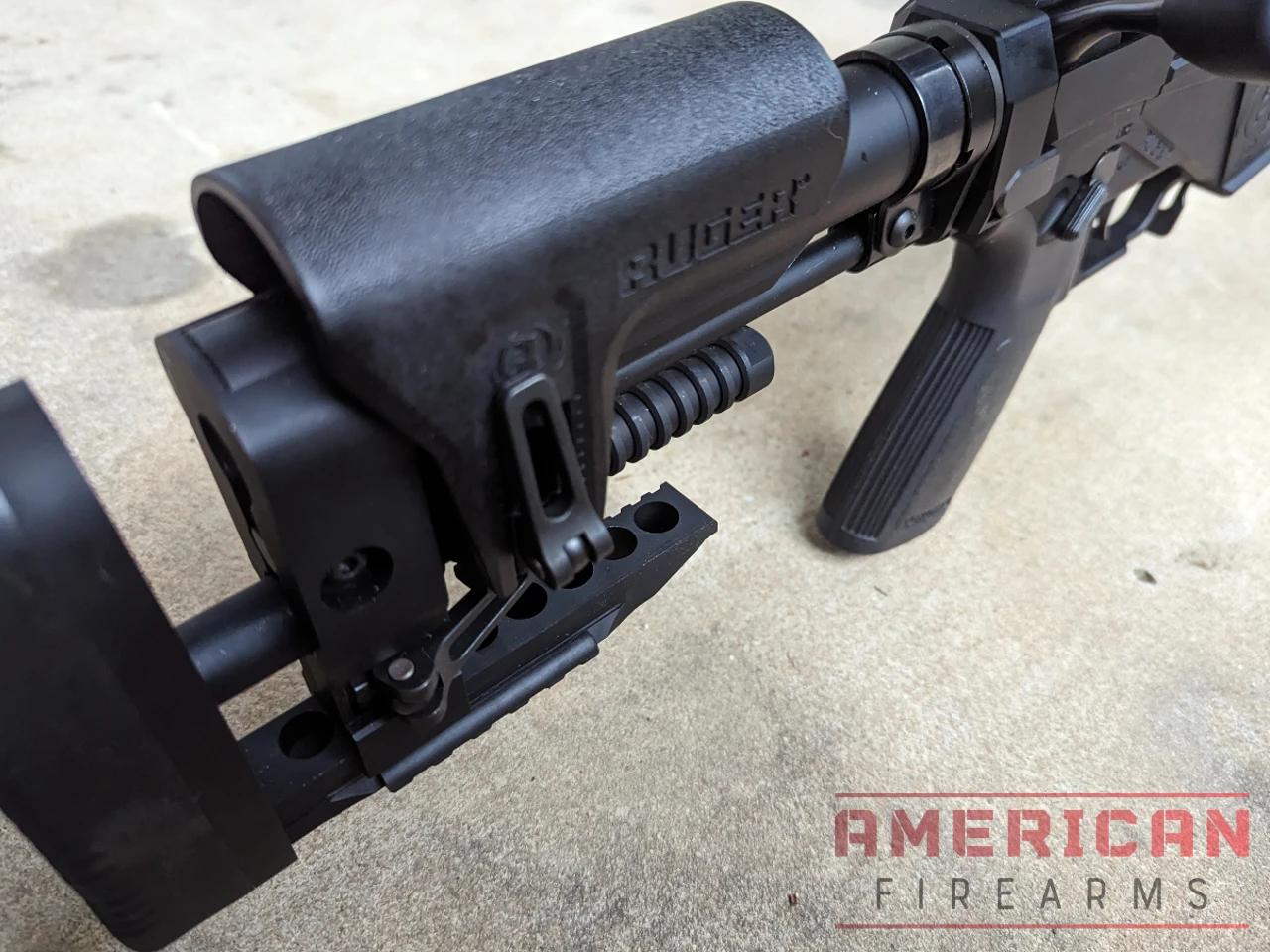
The stock…stock, is still fine though, especially for someone new to the sport. It is comfortable and adjustable with an Allen wrench for managing both length of pull and comb height, so you can get that custom rifle fit right out of the box. Plus the stock has a small rail section on the toe for a monopod or any other stability-enhancing goody you might want.
Barrel & Muzzle Device
The medium-contour cold hammer forged barrel is tipped with a threaded barrel and Ruger’s Precision Rifle Muzzle Brake, which is designed to alleviate felt recoil without blasting those to the side of you on the firing line. Of course, the threaded muzzle means you can drop in any muzzle device you want on the end of the 20” barrel — be it a suppressor or something other than Ruger’s hybrid muzzle brake.
Recoil in our 6.5 Creedmoor test gun was non-existent and allowed me to spot my hits (and misses) out to 800+ yards. Being able to keep your eye on the target all the way through impact is a huge benefit, and the overall mass of the RPR helps as much as the muzzle brake.
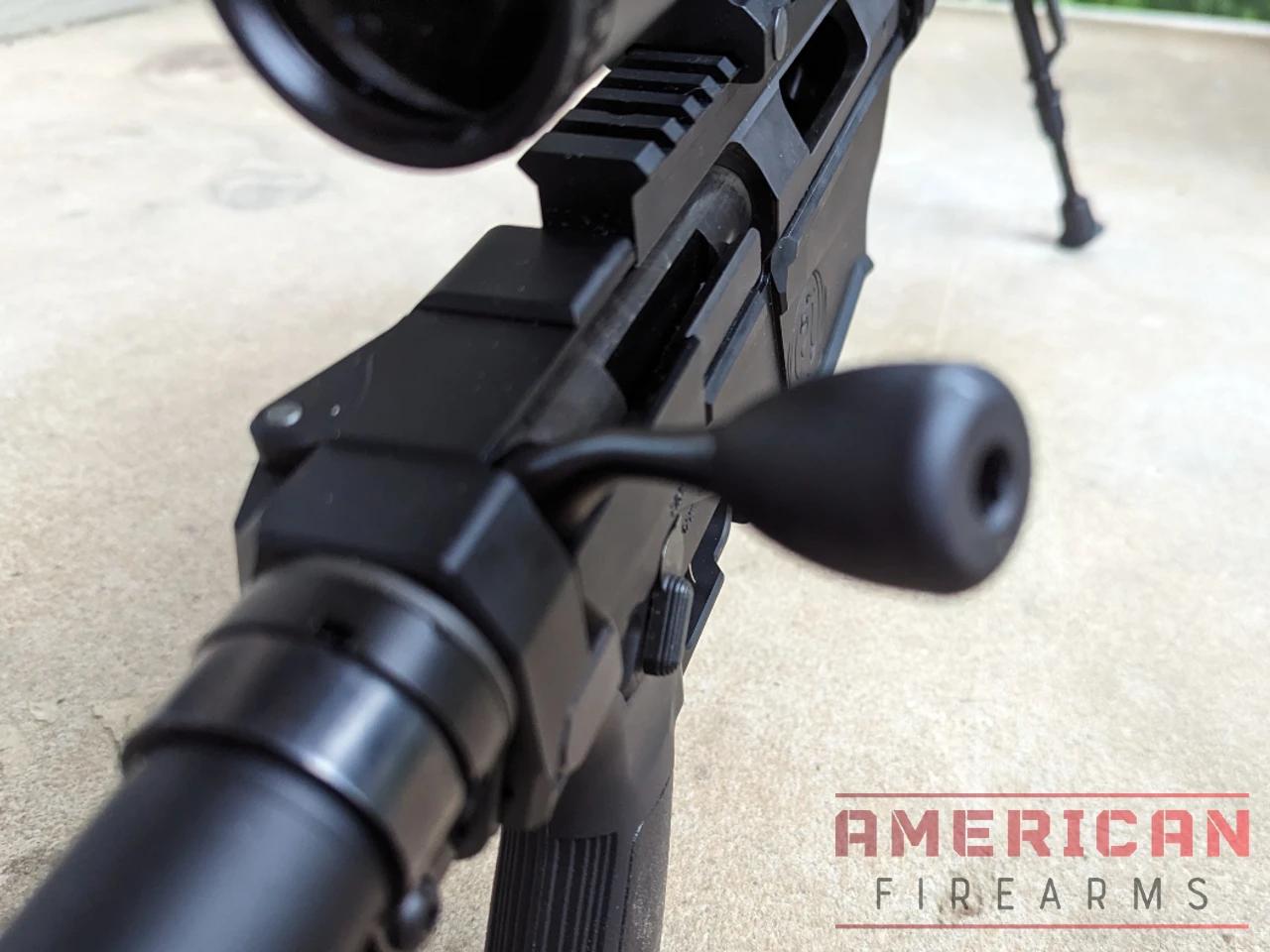
Make no mistake, this is a heavy rifle. It’s not lightweight hunting kit, but it’s not designed to be. It’s designed to be an accurate precision rifle — one that’s stable and soaks up recoil, and it excels in those areas.
The rifle does have QD sling points, and the stock folds and locks at the “buffer tube” via a rear throw lever to make transport easy though, so no worries about throwing your back out lugging it from stage to stage at a match.
Another bonus: folding the stock out of the way makes removing the bolt super easy.
The use of AR-compatible furniture means that anyone who has fired any kind of modern sporting rifle before will feel right at home.
Controls & Magazines
The ambidextrous magazine release lever is located just forward of the trigger guard and is part of Ruger’s patented multi-mag system. The RPR can accept a variety of magazines, including AICS mags, as well as SR-25/DPMS/Magpul-style mags, as well as newer M14 mags.
In other words, you won’t have to spend a mint on extra mags, and they’ll be easy to find.
In keeping with the AR-friendly nature, the safety lever appears to be directly from Ruger’s AR catalog.
The (Rather Excellent) Trigger
The trigger is Ruger’s Marksman unit, with a fully adjustable trigger pull weight from 2.5 to 5lbs, and is just about as good as any you’ll find on a production rifle these days. Long-range precision shooters might find it a touch heavy on its lowest setting but for most folks, 2.5 lbs is a great minimum, especially when learning.
It might be the best factory trigger in a bolt-action rifle at this price point. I promise it’ll blow your hunting rifle out of the water.
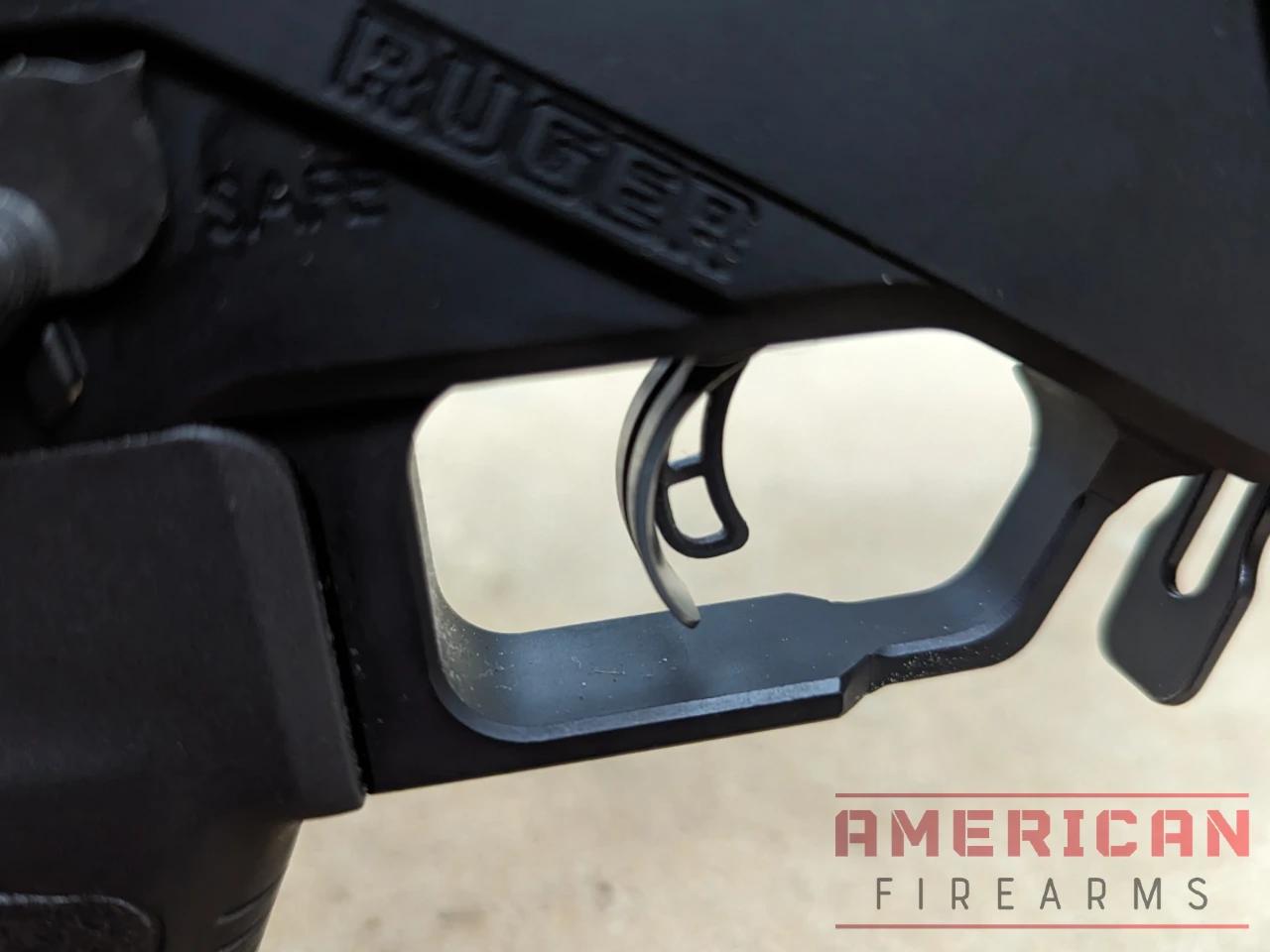
Rails & Action
The picatinny rail has a built-in 20 MOA of elevation, so coupled with an appropriate scope you can easily reach out to the upper limits of the 6.5 CM’s effective range without any issues there.
With the latest Gen 3 version of the PRP Ruger changed gears on the handguard, going from Keymod to M-Lok, which I prefer. I’ve always run M-Lok bipods, so this makes my life easy, but you may feel differently.
Moving down just a little bit, the bolt is a three-lug affair with a 70-degree throw and dual cocking cams. The bolt body is aluminum, and the bolt shroud contains the disassembly tool, making the teardown and cleaning of the whole unit a cinch.
The threaded bolt handle is oversized, so you can leave it how it is (I did) or swap it out for whatever you want.
Which is kind of the theme here. Everything on this rifle can be swapped around and customized to give you the fit, finish, and feel of a custom rifle, at about a quarter to a third of the price.
But how does it do at the range?
Performance and Precision
All the stats and features on paper don’t really matter if the gun doesn’t perform at the range, and for something like the RPR, performance is even more important. This is a gun that is, according to the marketing, supposed to get hits at 1600 yards.
We’ll just see about that.
Accuracy
Alright, just to get this out of the way, this gun is very accurate, more than accurate enough to compete in something like Precision Rifle Series, and if you’ve never shot beyond 100 yards or even 300 yards, this gun is more accurate than you are.
No disrespect intended whatsoever, we all start somewhere, and I can promise you the gun is far more accurate than I was when I started getting into true long-range competition shooting eight or so years ago. I’d say that my skills still haven’t outgrown the gun, almost a decade later.
With a decent scope my groups at 100 yards ranged from 0.39 inches (with Winchester Match 140gr, the best group) to 0.55 inches with Hornady American Gunner, a nice budget-friendly factory load. Average groups hovered around that half-MOA mark (considerably better than sub MOA accuracy) which is more than sufficient for getting hits past 1,000 yards.
At 300 yards, groups opened up to around 1.85 inches, and at 500 yards and beyond we were staying well within the .5-.75 MOA range, and that’s all with factory ammo. As for the price, I absolutely cannot complain about that.
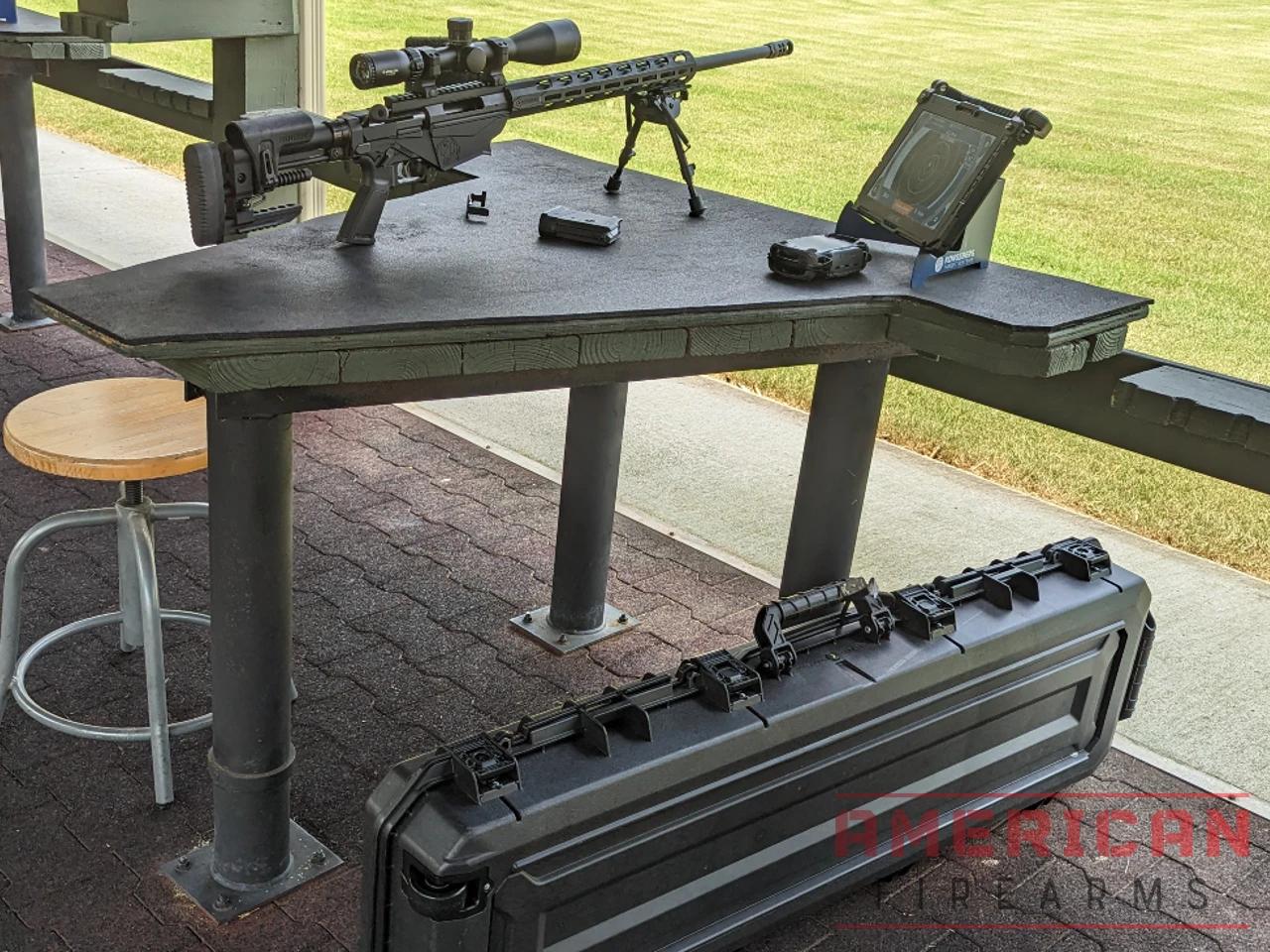
Testing Methodology and Scope
For this evaluation, I put over 800 rounds through the RPR across multiple range sessions, using a comprehensive mix of factory ammunition to simulate what most shooters will actually feed their rifles. Unlike some reviews that cherry-pick results with one premium load, I wanted to understand how this rifle performs with everything from budget-friendly target loads to top-tier match ammunition.
All accuracy testing was conducted from a solid bench rest using a Caldwell Lead Sled for consistency, with groups fired in calm conditions (winds under 5 mph). Each load received at least three 5-shot groups at 100 yards, with promising loads extended to 300 and 500-yard testing. The rifle was cleaned every 100 rounds and allowed to cool between group strings to ensure consistent conditions.
Factory Ammunition Performance Testing
| Load | Bullet Weight | Average Group (100yd) | Best Group | Velocity (fps) | Standard Deviation |
|---|---|---|---|---|---|
Winchester Match | 140gr BTHP | 0.39" | 0.28" | 2710 | 12 fps |
Hornady Match | 140gr ELD-M | 0.42" | 0.31" | 2695 | 15 fps |
Federal Gold Medal | 140gr SMK | 0.45" | 0.35" | 2685 | 18 fps |
Hornady Match | 120gr ELD-M | 0.50" | 0.39" | 2875 | 14 fps |
Prime Ammunition | 130gr OTM | 0.52" | 0.41" | 2790 | 16 fps |
Hornady American Gunner | 140gr BTHP | 0.55" | 0.44" | 2630 | 22 fps |
Federal Fusion | 140gr SP | 0.68" | 0.52" | 2650 | 28 fps |
Remington Core-Lokt | 140gr PSP | 0.78" | 0.61" | 2590 | 35 fps |
Hornady Superperformance | 129gr SST | 0.85" | 0.69" | 2950 | 31 fps |
Winchester Deer Season | 125gr Extreme Point | 0.91" | 0.74" | 2875 | 38 fps |
All groups represent 5-shot averages over minimum 3 groups per load
What the Numbers Tell Us
The standout performer was Winchester’s Match load with the 140-grain BTHP, consistently delivering groups that averaged just 0.39 inches at 100 yards. The best single group with this load measured an impressive 0.28 inches—that’s well into custom rifle territory. More importantly, the consistency was excellent, with very little variation between groups.
Hornady’s 140-grain ELD Match came in a close second, and frankly, the difference between it and the Winchester load is within the margin of shooter error. Both loads showed excellent velocity consistency, with standard deviations well under 20 fps, which translates to predictable long-range performance.
What’s particularly encouraging is how well the rifle performed with more affordable ammunition. The Hornady American Gunner load, which typically runs about half the cost of premium match ammunition, still averaged 0.55 inches. That’s more than adequate for most hunting applications and casual target shooting.
Extended Range Performance
| Distance | Winchester 140gr Match | Hornady 140gr ELD-M | Federal 140gr SMK |
|---|---|---|---|
100 yards | 0.39" (0.37 MOA) | 0.42" (0.40 MOA) | 0.45" (0.43 MOA) |
300 yards | 1.25" (0.40 MOA) | 1.35" (0.43 MOA) | 1.42" (0.45 MOA) |
500 yards | 2.18" (0.42 MOA) | 2.31" (0.44 MOA) | 2.48" (0.47 MOA) |
At 300 yards, groups opened up to around 1.25-1.45 inches with premium loads, and at 500 yards we were staying well within the 0.5 MOA range. This level of consistency across extended distances is exactly what you need for confident long-range shooting. The rifle maintained its accuracy nodes remarkably well as distance increased, suggesting excellent barrel harmonics and consistent velocity.
Break-In Period Observations
One interesting discovery was how the rifle’s accuracy evolved during the break-in period. For the first 50 rounds, groups with premium ammunition averaged around 0.6-0.7 inches. After a thorough cleaning and another 50 rounds, accuracy tightened significantly, with the best loads dropping into the 0.4-inch range consistently.
This break-in effect is common with hammer-forged barrels, and I recommend new owners not get discouraged if initial accuracy isn’t spectacular. Give the rifle 100 rounds with quality ammunition and proper cleaning, and you’ll likely see a noticeable improvement.
Load Sensitivity and Preferences
The RPR showed some distinct preferences in ammunition selection. It clearly favored 140-grain bullets in the 2,650-2,720 fps velocity range, with multiple loads in this category delivering sub-0.5 MOA performance. Lighter bullets (120-130 grain) showed good accuracy but seemed slightly more sensitive to environmental conditions.
Hunting ammunition performed adequately, with most loads staying within 0.7-0.9 MOA, which is more than sufficient for any North American game animal. However, the accuracy gap between match and hunting ammunition was significant enough that I’d recommend match-grade loads for serious target work.
Practical Accuracy Assessment
Here’s the bottom line: this rifle will consistently deliver half-MOA performance with quality ammunition, and skilled shooters can achieve groups well under that benchmark. Average groups hovered around that half-MOA mark (considerably better than the often-cited “sub-MOA accuracy” standard), which is more than sufficient for getting hits past 1,000 yards.
During field shooting from improvised positions—using bipods, backpacks, and barricades—the rifle maintained excellent practical accuracy. The combination of the effective muzzle brake, substantial weight, and stable chassis design makes it very forgiving for field shooting positions.
Competition-Grade Performance Validation
To put these numbers in perspective, the accuracy I achieved with factory ammunition equals or exceeds what many custom rifles deliver. In Precision Rifle Series competition, where hits matter more than tiny groups, this level of accuracy provides significant margin for success. The consistency across different loads also means competitors can choose ammunition based on availability and cost without sacrificing performance.
The velocity consistency numbers are particularly impressive for a factory rifle. Standard deviations under 20 fps with quality ammunition translate to predictable trajectory performance at extended range, which is crucial for both competition and hunting applications.
This isn’t just adequate accuracy—it’s genuinely impressive performance that validates the “Precision” in the rifle’s name. Whether you’re punching paper, hunting at extended range, or competing in matches, the RPR delivers the accuracy foundation you need to succeed.
Ergonomics
This is another area where the RPR excels. It’s actually really difficult to find fault with such a modular setup that is designed to be customized by the end user, but if we’re just evaluating performance as it comes out of the box, it’s still excellent.
The grip is comfortable, though not my preferred for something like precision rifle shooting. I tend to like a more vertical grip, and I have very, very tiny hands so it wasn’t the perfect size for me out of the box.
Then again, swapping to my go-to grip took about two minutes, and if your hands aren’t in the extra-small range you won’t have any issues. That said, I recommend experimenting with grips. They’re such an easy way to further improve your rifle fit, and let’s be honest; precision shooting performance all starts with a secure, comfortable grip.
My one real niggle is that the cheek comb adjustment is a little fiddly and has just one release lever that adjusts both height and front-to-back positioning.
This can make getting the riser exactly where you want it a little persnickety, but this is really a set-it-and-forget-it thing for most people, so not a big deal at all.
One erroneous complaint I often see has to do with manually feeding single rounds. Some folks have stated that you must insert a magazine to chamber a single round, but that’s not true at all. You can chamber a single round with or without a magazine in place.
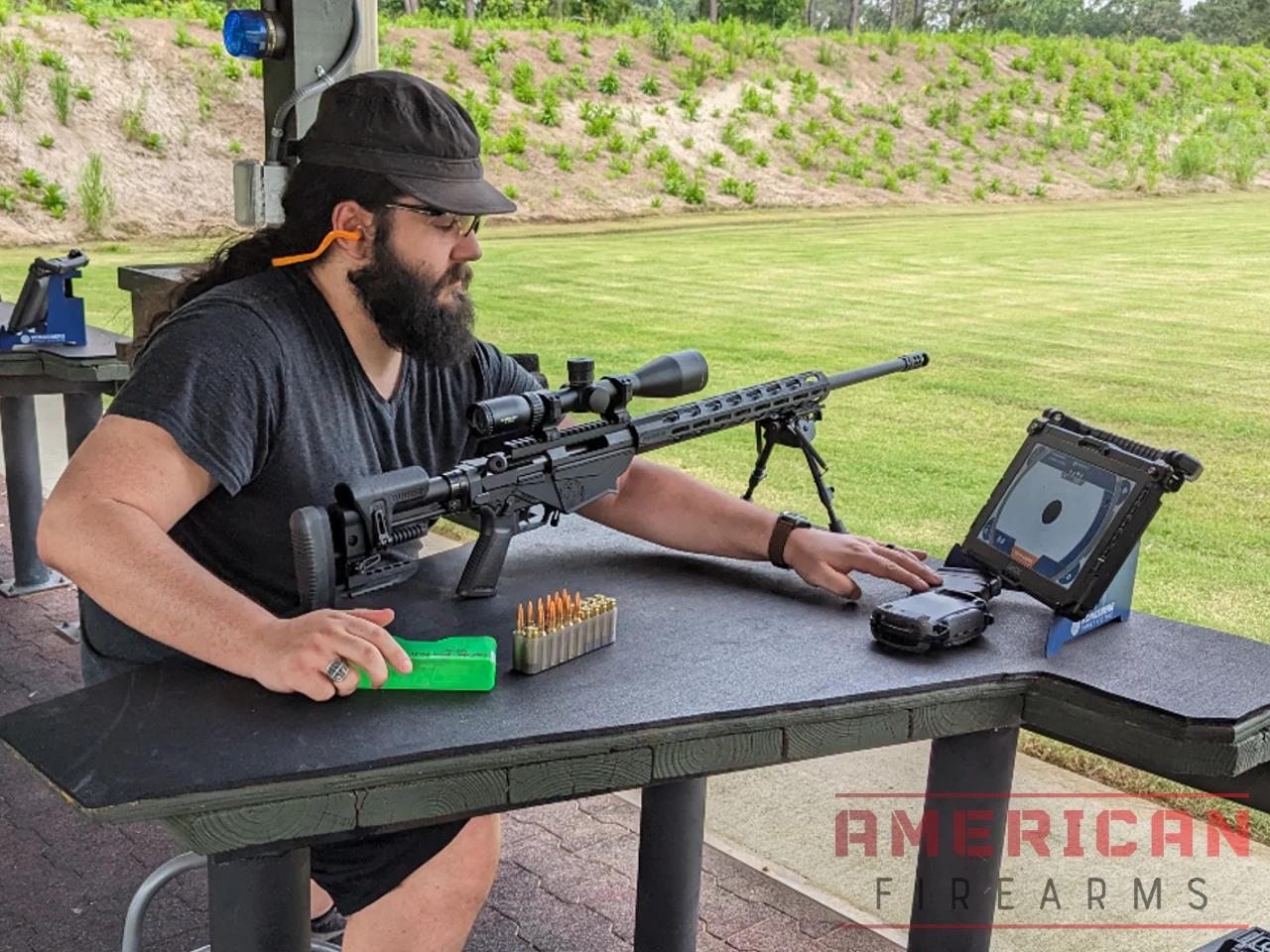
Features & Customization
Out of the box, the Ruger Precision Rifle has everything you need to start shooting in something like PRS, at least as far as the rifle itself goes.
Throw an appropriate scope on it, and you can get hits at 800 yards if you have even half an idea what you’re doing.
But if you want to change something, you have options there too. The whole world of AR-compatible stocks and grips is just the beginning. You can get a new bolt shroud, barrel, handguard, trigger, or really any other part you want, and you’ll have multiple options to choose from.
You can leave it bone stock and have a blast with it and even compete quite seriously with it, or you can tweak, tinker, and upgrade on every little piece of it until there’s barely a single stock part left.
And Ruger has gone out of their way to make that kind of modification easy without skimping on the parts you get with the factory rifles. The MSR stock and Marksman trigger are both great parts and won’t hold you back compared to the folks spending twice as much on their guns.
You can also swap them out in under five minutes if you want. What’s not to love about that?
Fit & Finish
Here’s where I’m going to be nitpicky because there’s really nothing else to say negative about the gun. I’m coming at this as someone who has spent time behind rifles that cost more than my Subaru Outback, so this is something of a snobby opinion.
That said, the fit and finish on the RPR are good. Not outstanding or amazing, but still well above average and totally appropriate for the price point. In fact, if we’re just comparing to other similarly-priced rifles, I’d say the RPR might beat most on the fit and finish front.
Why the points off?
Because I’m picky. The bolt sticks a bit if you don’t run it perfectly straight, especially if you apply any downward pressure on either the pull or push forward, as one might when hurrying to finish a stage in an awkward position. PRS match directors like to make you shoot off of uncomfortable and un-ergonomic barricades and out of all kinds of pipe, car windows, or whatever.
It’s not enough to be a reliability issue, and the bolt doesn’t hang up, you just feel it catch and slow down for a second when you start the bolt lift. As I said, I’m realllllly nitpicking here.
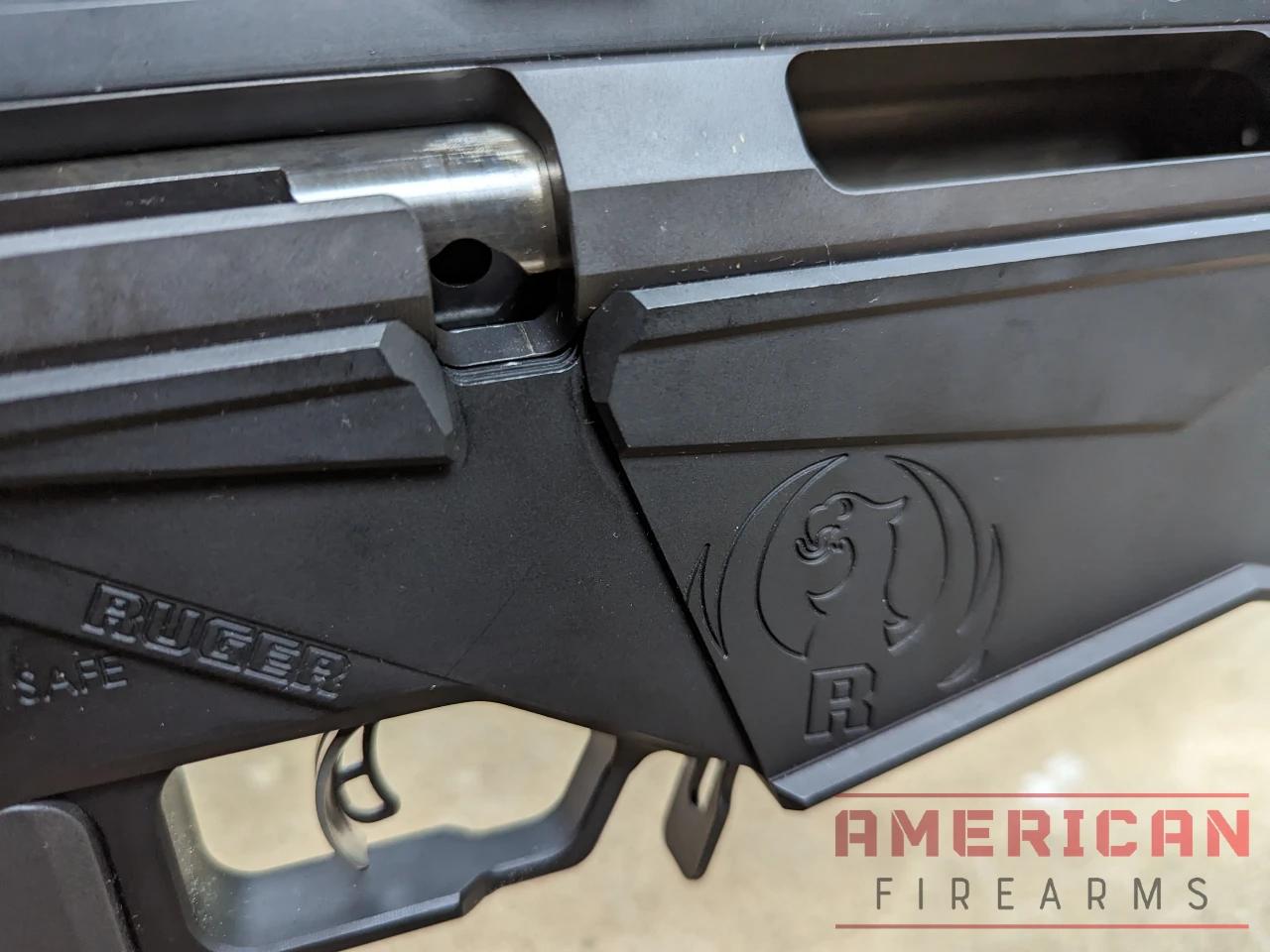
I also found the finish on the handguard to be less durable than some of my other rifles, and after a few quick moves around said awkward barricades (particularly a concrete culvert pipe) the handguard picked up a scratch. Was it my fault? Sure.
But I gotta come up with something negative to say somewhere in this review or I’m gonna get called a Ruger shill. Which is fine if I’m actually getting paid by a manufacturer, but I bought this rifle with my own hard-earned money just like anyone else.
Reliability
The gun goes bang every time you ask it to, and it puts bullets where you tell it to. In over 400 rounds, we’ve experienced not a single issue. The biggest issue we’ve had was an issue with the bolt handle coming unthreaded which…come on. That’s not even a real issue, that’s just me forgetting to tighten it.
The trigger is smooth and predictable, the barrel is good for 3,000 rounds and replacements can be had for $400 so after you’ve sent your $6,000 worth of ammo down it you’ll definitely feel you’ve gotten your money’s worth.
All in all, no faults here.
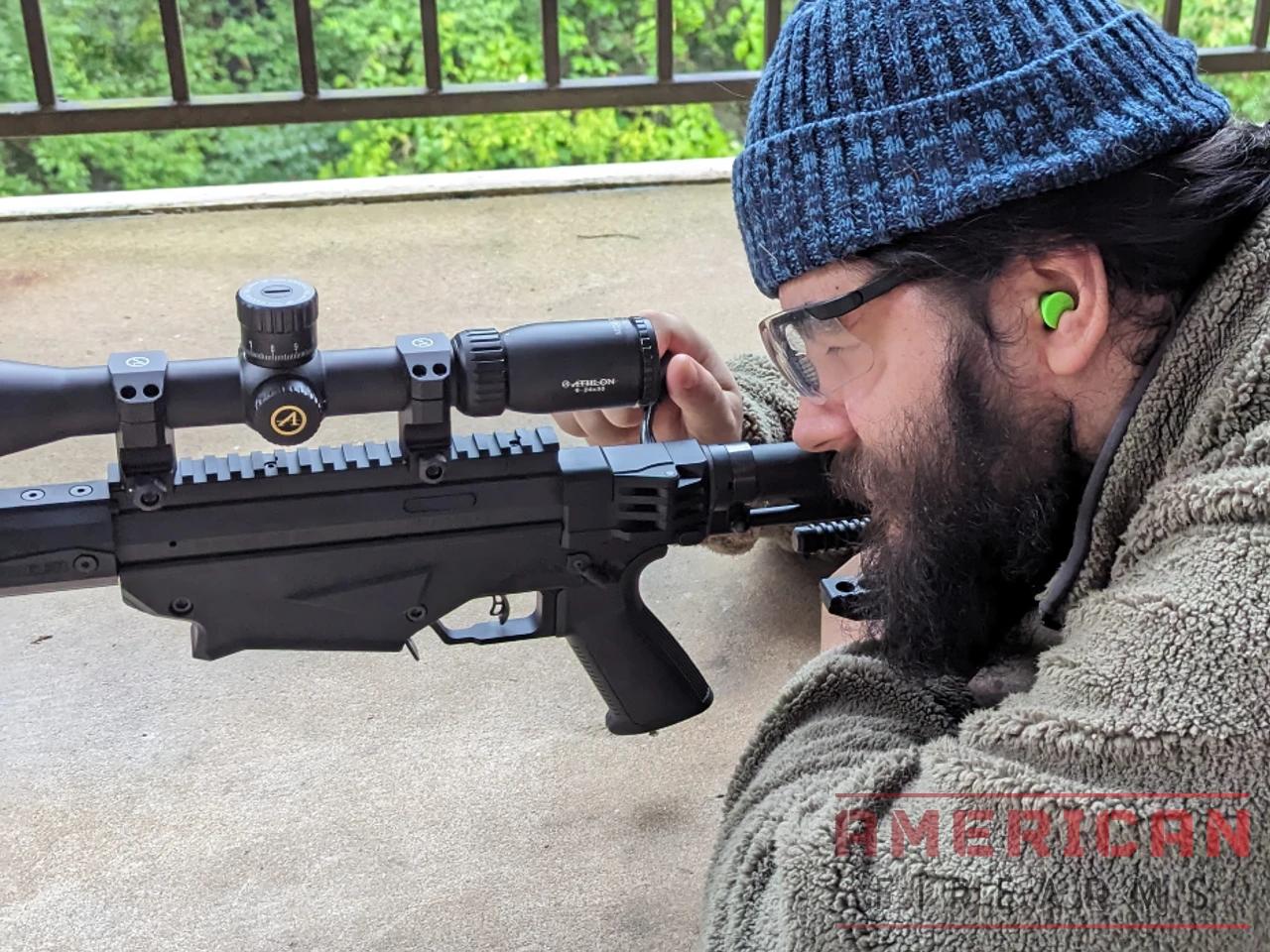
Value
I’m just being nitpicky again here because this really is one of the greatest values in shooting sports right now, but there are technically better rifles out there with more/improved features that come in at a similar price point.
Compared to a $5,000 custom rifle, this gun will do 90 percent of what that high-end Masterpiece Arms or whatever will do, at 25 percent of the price. In that regard, it’s an incredible value.
Competition Use: Where the RPR Really Shines
One area where the Ruger Precision Rifle has truly proven its mettle isn’t on the range with casual shooters—it’s in the hands of professional competitors who put their reputations (and prize money) on the line with every shot. When I first started hearing about the RPR showing up at major precision rifle competitions, I’ll admit I was skeptical. Could a factory rifle really hang with custom builds costing three times as much? The answer, as it turns out, is a resounding yes.
Doug Koenig and the Production Division Revolution
The most compelling validation of the RPR’s competitive capability came from an unexpected source: Doug Koenig, one of the most accomplished competitive shooters in history. When Koenig took home the Production Division trophy at the 2024 Hornady Precision Rifle Challenge with his RPR, it wasn’t just a win—it was a statement. Here’s a shooter who has his pick of any rifle in the world, and he chose to compete with the same rifle you can walk into a gun store and buy.
What makes Koenig’s endorsement particularly meaningful is that he’s not just slapping his name on a product for marketing purposes. He’s actively collaborated with Ruger engineers to refine the RPR for competitive use, focusing on the adjustability and modularity that allow competitors to fine-tune their setup for different stages and shooting positions. When someone of Koenig’s caliber says he heads into matches with confidence because he can adjust the rifle to fit his exact needs, that carries real weight.
I’ve had the chance to watch several RPRs in action at local PRS matches, and what strikes me is how well the rifle adapts to the diverse challenges these competitions present. One minute you’re shooting prone from a bench, the next you’re contorted around a barricade trying to make hits at 600 yards. The RPR’s adjustable stock and modular design shine in these situations.
PRS Production Division: The RPR’s Natural Habitat
The Precision Rifle Series Production Division was practically tailor-made for rifles like the RPR. With equipment restrictions that cap rifle cost at around $2,500 and scope cost at $2,000, the division levels the playing field and emphasizes shooter skill over equipment budgets. Within these constraints, the RPR has become increasingly popular, and for good reason.
The magazine capacity advantage becomes crucial in PRS stages that require multiple target engagements within tight time limits. While some competitors struggle with 5-round magazines, RPR shooters can run 10-round magazines straight from the factory, with options for larger capacities if needed. I’ve watched stages where competitors with smaller magazines had to reload mid-string, losing precious seconds, while RPR shooters could engage all targets without magazine changes.
The folding stock capability, which might seem like a gimmick to casual shooters, proves genuinely useful in competition transport and storage. When you’re traveling to matches with multiple rifles, cases, and gear, every inch of space matters. The ability to fold the stock and reduce overall length by nearly eight inches makes packing significantly easier.
Competitive Modifications and Upgrades
One of the RPR’s greatest strengths in competition is its upgrade path. Unlike some rifles where modifications require expensive gunsmithing, the RPR’s modular design allows competitors to evolve their setup as their skills and needs develop. The most common upgrades I see among competitive RPR shooters include:
Trigger upgrades remain popular despite the factory trigger being quite good. Companies like Timney offer drop-in replacements that bring the pull weight down and provide an even crisper break. For Production Division rules, these upgrades need to stay within cost caps, but they’re typically allowed.
Stock and grip modifications are where the AR compatibility really pays dividends. Competitive shooters can swap between different grips for various stages, adjust length of pull for different shooting positions, and even change buttpad configurations. I’ve seen competitors carry multiple grips to matches, swapping them based on stage requirements.
Muzzle device upgrades can significantly improve recoil management and target tracking. While the factory hybrid brake is effective, aftermarket options from companies like Area 419 or Precision Armament can provide better recoil reduction and help shooters spot their hits more consistently.
The Reality of Competition Performance
Here’s what I find most impressive about the RPR in competition: it doesn’t hold shooters back. In a sport where equipment limitations can be frustrating, the RPR provides a platform that grows with the competitor’s skills. Beginning competitors aren’t handicapped by the rifle’s capabilities, and advanced shooters aren’t frustrated by its limitations.
I’ve personally witnessed RPR shooters consistently place in the top third of Production Division competitions, often beating custom rifles costing significantly more. The rifle’s inherent accuracy, combined with its modularity, allows skilled shooters to extract maximum performance from the platform.
The learning curve is also favorable for new competitive shooters. The RPR’s familiar AR-style controls reduce the cognitive load during high-stress stages. Shooters don’t need to think about magazine releases or safety operation—muscle memory from modern sporting rifles translates directly.
Training and Development Benefits
For shooters looking to develop their precision rifle skills, the RPR offers some unique advantages. The ability to configure the rifle for different shooting positions and scenarios makes it an excellent training tool. Adjustable length of pull allows shooters to experiment with different positions and find what works best for their body type and shooting style.
The magazine compatibility is particularly valuable for training. Different magazine capacities and types allow shooters to practice stage management, which is crucial in competitive success. Being able to practice with everything from 5-round AICS magazines to 20-round PMAGs helps develop adaptability.
Competition Pedigree Validation
Perhaps most importantly, the RPR’s competitive success validates its design philosophy. When rifles perform under the stress and scrutiny of serious competition, with money and reputation on the line, that’s the ultimate proving ground. The fact that the RPR hasn’t just participated but excelled in this environment speaks to its fundamental soundness as a precision platform.
This competition pedigree also benefits recreational shooters. The same features that help competitive shooters excel—modularity, accuracy, reliability—translate directly to improved performance for hunters, target shooters, and anyone seeking precision at distance.
The RPR has evolved from being a budget alternative to custom rifles into being a legitimate competitive platform in its own right. That transformation, validated by professional competitors like Doug Koenig and countless weekend warriors pushing themselves at local matches, represents perhaps the strongest endorsement any rifle can receive. When your reputation depends on your rifle performing flawlessly, the RPR has proven it belongs in the conversation with rifles costing significantly more.
Head-to-Head: How the RPR Stacks Up
After spending time behind the RPR and having the chance to test several of its main competitors over the past few years, I can tell you that choosing between these rifles isn’t as straightforward as comparing spec sheets.
Each has carved out its own niche, and the “best” choice really depends on what you’re planning to do with it. Let me break down how the RPR measures up against the rifles most buyers are cross-shopping.
RPR vs. Bergara B14 HMR: The Accuracy Showdown
I love Bergara rifles, and the Bergara B14 HMR kind of straddles the line between a souped-up hunting rifle, and a true precision rifle. Based on how you set it up, it can either be a backpack rifle for a long-distance backcountry hunt, or a true precision rifle ready to set up on a barricade and ring steel at 1,200 yards.
It has a phenomenal trigger, an industry-leading barrel, and uses an integrated mini-chassis system molded into the stock for repeatable accuracy no matter what kind of shooting you’re doing.
The Bergara B14 HMR represents probably the RPR’s most direct threat in terms of pure shooting performance per dollar. I’ve had the opportunity to shoot both side by side, and the differences are telling.
Where the Bergara Wins: The B14 HMR’s barrel is simply exceptional for the price point. Bergara’s Spanish barrel-making heritage shows, and I’ve consistently seen tighter groups from the HMR with less load development work. The bolt operation is also noticeably smoother—none of that slight notchiness you can get with the RPR if you don’t run it straight back and forward. The trigger is excellent out of the box, a crisp single-stage unit that breaks clean at around 3 pounds.
Where the RPR Fights Back: Magazine capacity tells the story here: 10 rounds in the RPR versus 5 in the Bergara for most calibers. If you’re shooting PRS-style competitions where you might need multiple quick follow-ups, that magazine capacity matters. The RPR’s full chassis system also offers more adjustability—the Bergara’s mini-chassis is solid but less modular. And let’s talk aftermarket support: finding accessories for the RPR is easy, while Bergara-specific parts require more hunting.
The Verdict: If you’re primarily a bench shooter or hunter who values pure accuracy above all else, the Bergara B14 HMR at $200-300 less than the RPR is compelling. But if you want to grow into competitive shooting or appreciate maximum modularity, the RPR’s extra cost makes sense.
RPR vs. Tikka T3X TAC A1: The Premium Alternative
The Tikka T3X Tac A1 features a hammer-forged barrel that is threaded and tipped with a three-way brake and features an M-LOK forend on the chassis so you can attach your bipod, quiver, or what have you as needed.
It uses aluminum bedding blocks for the action and has the same AR-compatible stock and grip setup as the RPR. It might have a slightly better trigger, but it doesn’t have the same mag compatibility and is also a good deal more expensive. Still, it’s maybe a hair better out of the box.
The Tikka represents a step up in price from the RPR—usually $300-500 more—but that extra money buys you some genuine improvements that are immediately apparent when you handle both rifles.
Where the Tikka Excels: The bolt operation on the T3X TAC A1 is in a different league. It’s butter-smooth with a shorter 60-degree throw, and the two-lug system locks up tight every time. The build quality feels more refined throughout, from the machining tolerances to the way all the components fit together. The magazine system, while proprietary, is rock-solid reliable. I’ve never had a feeding issue with a Tikka mag, which is more than I can say for some of the third-party magazines the RPR accepts.
Where the RPR Holds Its Ground: Modularity and aftermarket support still favor the RPR significantly. The Tikka’s chassis is excellent, but you’re somewhat locked into what Tikka provides. Magazine compatibility is the big one—AICS magazines for the Tikka run $60-80 each, while the RPR will happily eat $15 PMAGs all day long. The RPR’s trigger is also adjustable from the factory, while the Tikka’s, though good, isn’t easily user-adjustable.
The Real Difference: The Tikka feels like a more expensive rifle because it is one. If your budget allows and you value that buttery-smooth bolt operation and slightly tighter tolerances, it’s worth the extra money. But the RPR delivers 90% of the performance for significantly less cash, especially when you factor in magazine and accessory costs.
RPR vs. Savage 110 Precision: The Value Fight
The Savage 110 Precision usually comes in about $100-200 under the RPR’s street price, making it an interesting value alternative that shares some similar features.
Savage’s Strong Points: That AccuTrigger is genuinely excellent—crisp, adjustable, and reliable. The barrel quality is solid, and Savage’s reputation for accuracy is well-deserved. The rifle accepts AICS magazines, solving the compatibility issue you get with some alternatives. The action, while not as smooth as a Tikka, is more consistent than some RPRs I’ve handled.
Where the RPR Pulls Ahead: The chassis system on the RPR is simply more sophisticated. The Savage uses a more traditional stock approach, which some prefer, but it doesn’t offer the same level of adjustability. The RPR’s folding stock capability is genuinely useful for transport and storage. Magazine compatibility on the RPR extends well beyond just AICS patterns, giving you more options for different capacity and price points.
The Practical Reality: For a shooter who plans to mostly shoot from a bench or prone position and doesn’t need maximum adjustability, the Savage 110 Precision offers excellent value. It’ll shoot just as accurately as the RPR for most applications. But if you want to grow into competitive shooting or appreciate the tactical aesthetic and modularity, the RPR’s extra cost is justified.
The Wild Cards: What Else Should You Consider?
Mossberg Patriot LR Tactical comes in well under $1,000 and offers surprisingly good performance, but the build quality and aftermarket support don’t match any of the rifles above. It’s worth considering if budget is the primary constraint.
Ruger American Predator deserves mention as Ruger’s budget alternative to their own RPR. I would be remiss if I didn’t touch on this much cheaper option. The American Predator line features the same Marksman-style trigger that you get in the RPR, just not tuned quite as nicely. Same excellent trigger family, solid accuracy, but in a more traditional hunting rifle format. At half the RPR’s price, it’s worth considering if you don’t need the full tactical chassis setup.
Competitive Comparison Table
| Feature | RPR | Bergara B14 HMR | Tikka T3X TAC A1 | Savage 110 Precision |
|---|---|---|---|---|
Typical Street Price | $1550 | $1000 | $1800 | $1350 |
Magazine Capacity | 10+1 | 5+1 | 10+1 | 10+1 |
Bolt Throw | 70° | 90° | 60° | 90° |
Trigger Adjustability | Yes (2.5-5 lbs) | No | Limited | Yes |
Magazine Compatibility | Excellent | Limited | Proprietary | AICS only |
Aftermarket Support | Extensive | Moderate | Good | Moderate |
Typical Accuracy | 0.5-0.75 MOA | 0.3-0.5 MOA | 0.4-0.6 MOA | 0.5-0.8 MOA |
The Bottom Line on Competitors
Here’s the honest truth: you can’t go seriously wrong with any of these rifles. The differences in practical accuracy are smaller than most shooters can exploit, and they’ll all put you in the game for precision shooting.
The RPR’s strength lies in its proven track record, extensive modularity, and broad compatibility with accessories and magazines. It’s not the cheapest option anymore, and it’s not the most accurate out of the box, but it offers the best combination of performance, upgradeability, and support ecosystem.
If I had to recommend based on specific use cases:
- Pure accuracy on a budget: Bergara B14 HMR
- Best overall experience with money no object: Tikka T3X TAC A1
- Best value for occasional precision shooting: Savage 110 Precision
- Best platform for competitive shooting: Still the RPR, thanks to magazine capacity, modularity, and proven competition record
The key is being honest about your intended use and budget. The RPR remains an excellent choice, but it’s no longer the obvious choice it once was. And honestly? That’s probably good for shooters, even if it makes the buying decision a bit more complex.
Coming Soon
August 31, 2025 — Major content update with expanded market analysis addressing current RPR pricing concerns, comprehensive head-to-head comparisons with Bergara B14 HMR and Tikka T3X TAC A1, professional competition validation including Doug Koenig’s championship success, and detailed accuracy testing with 10 different ammunition types.
Sign up for our newsletter
Get discounts from top brands and our latest reviews!




